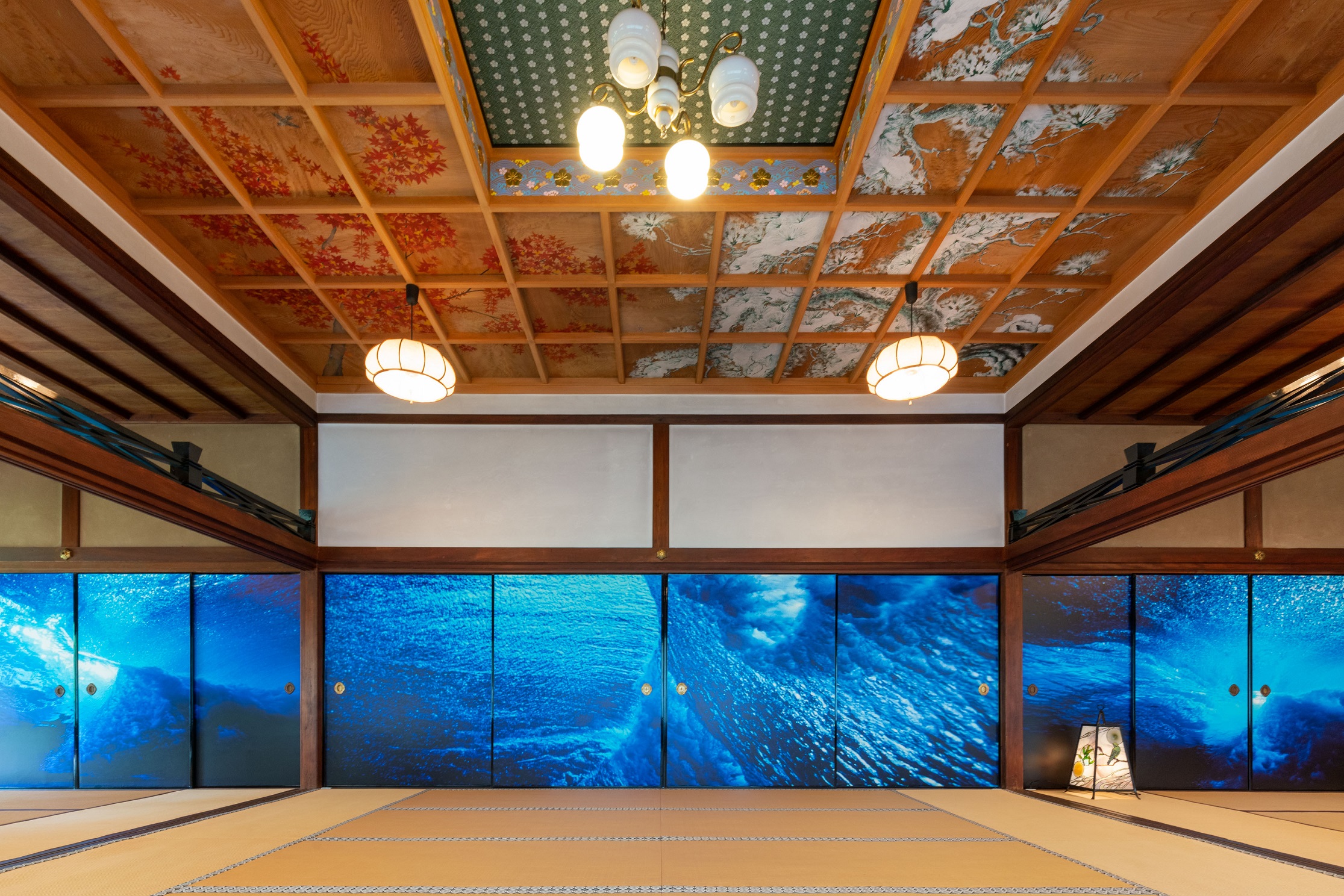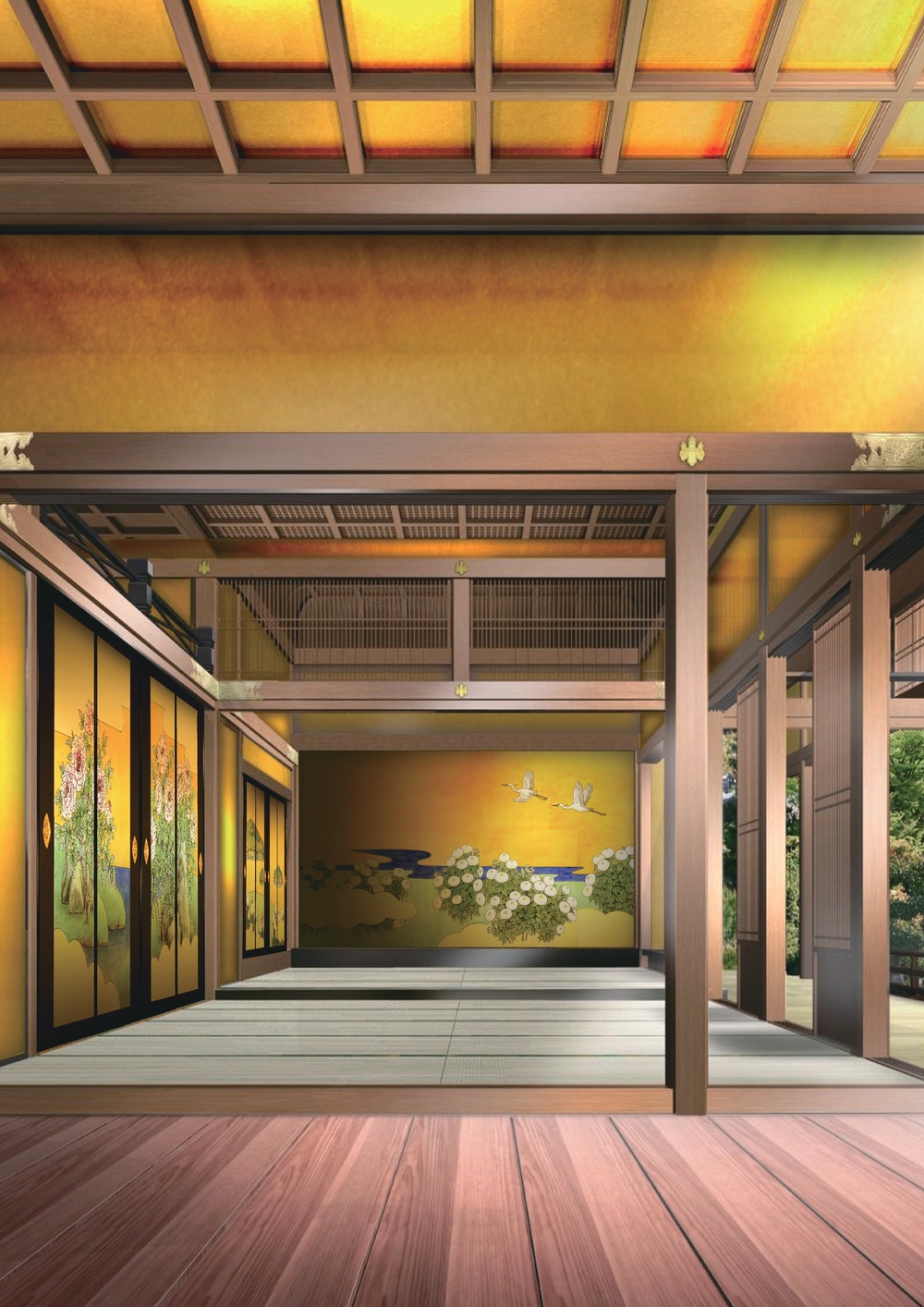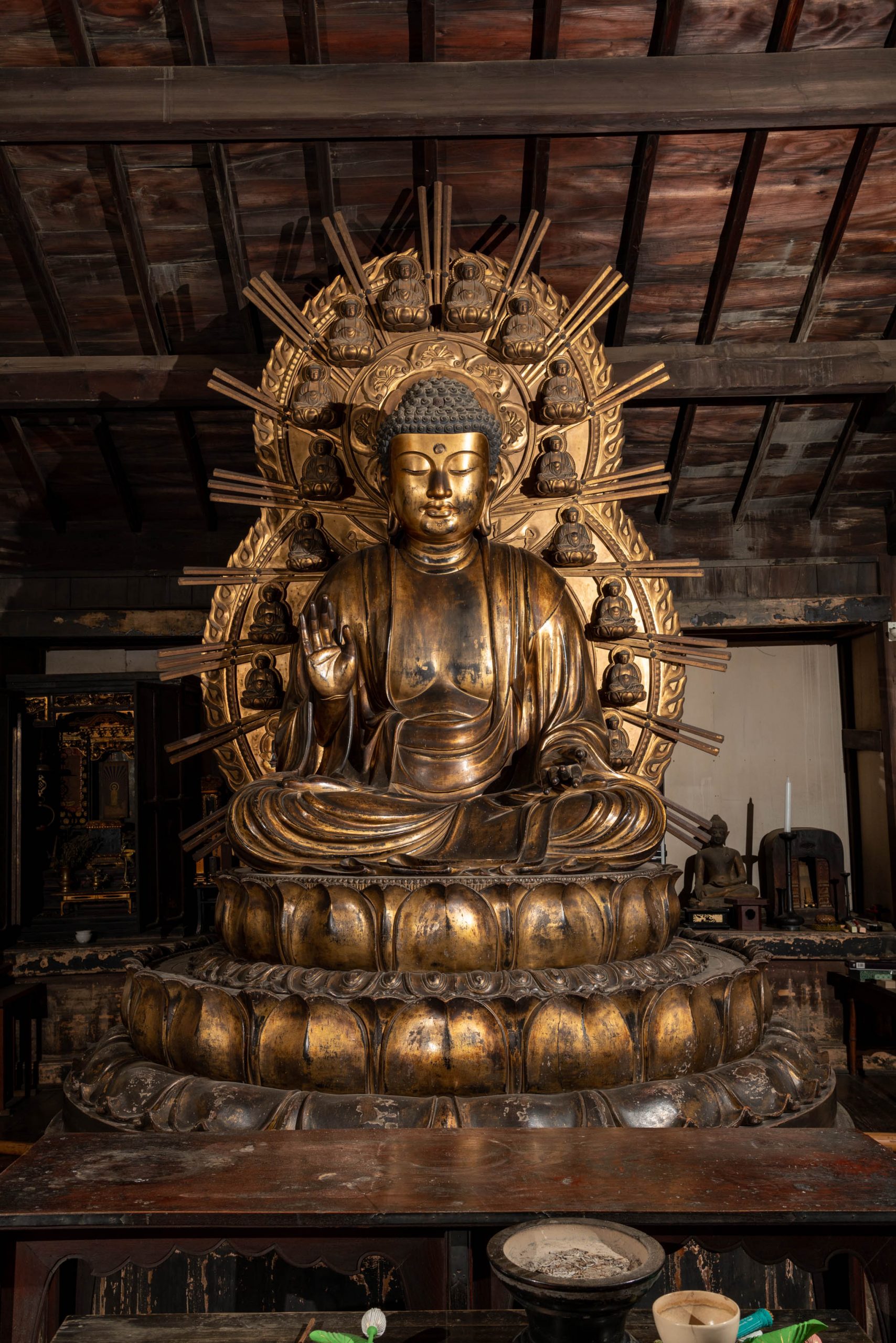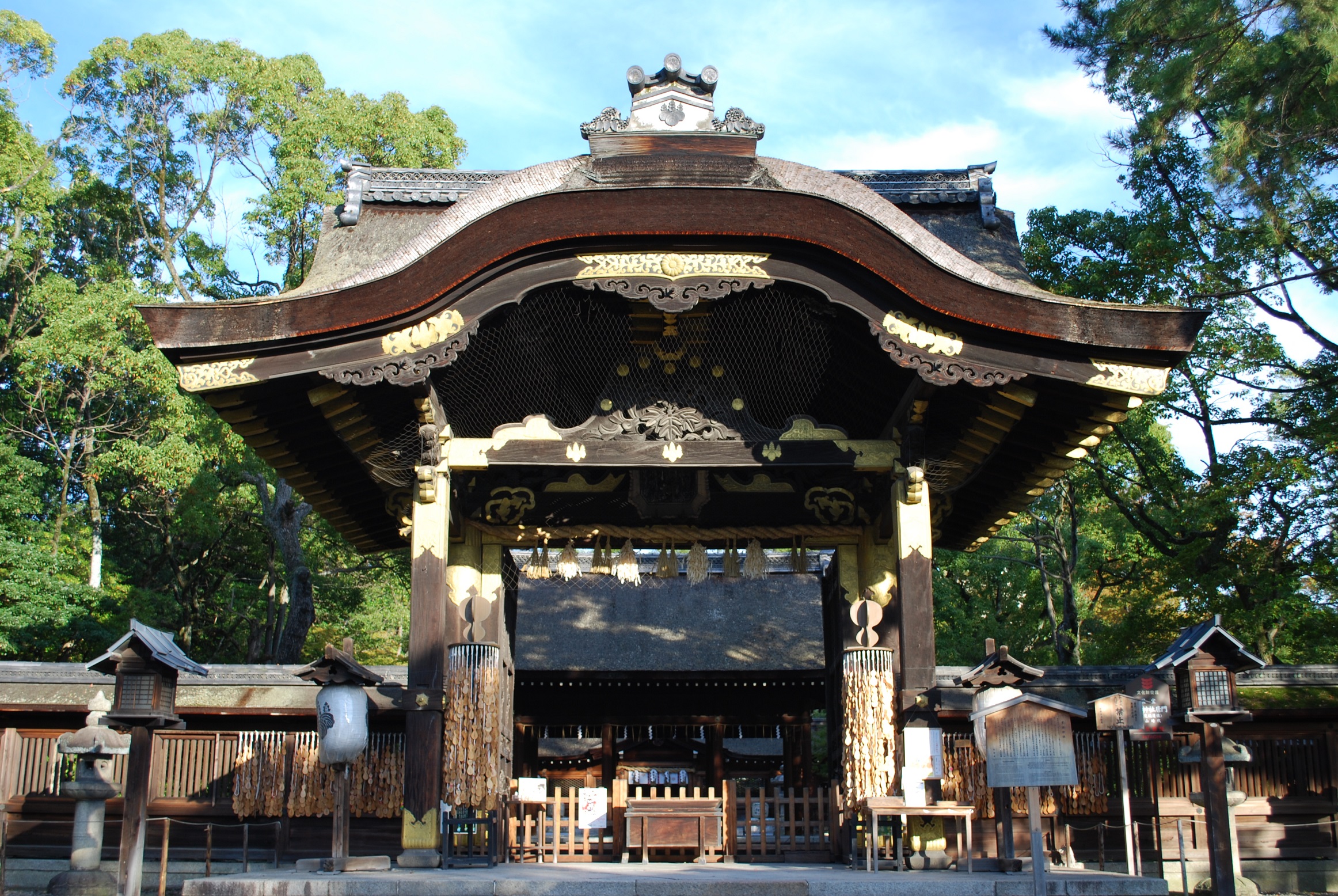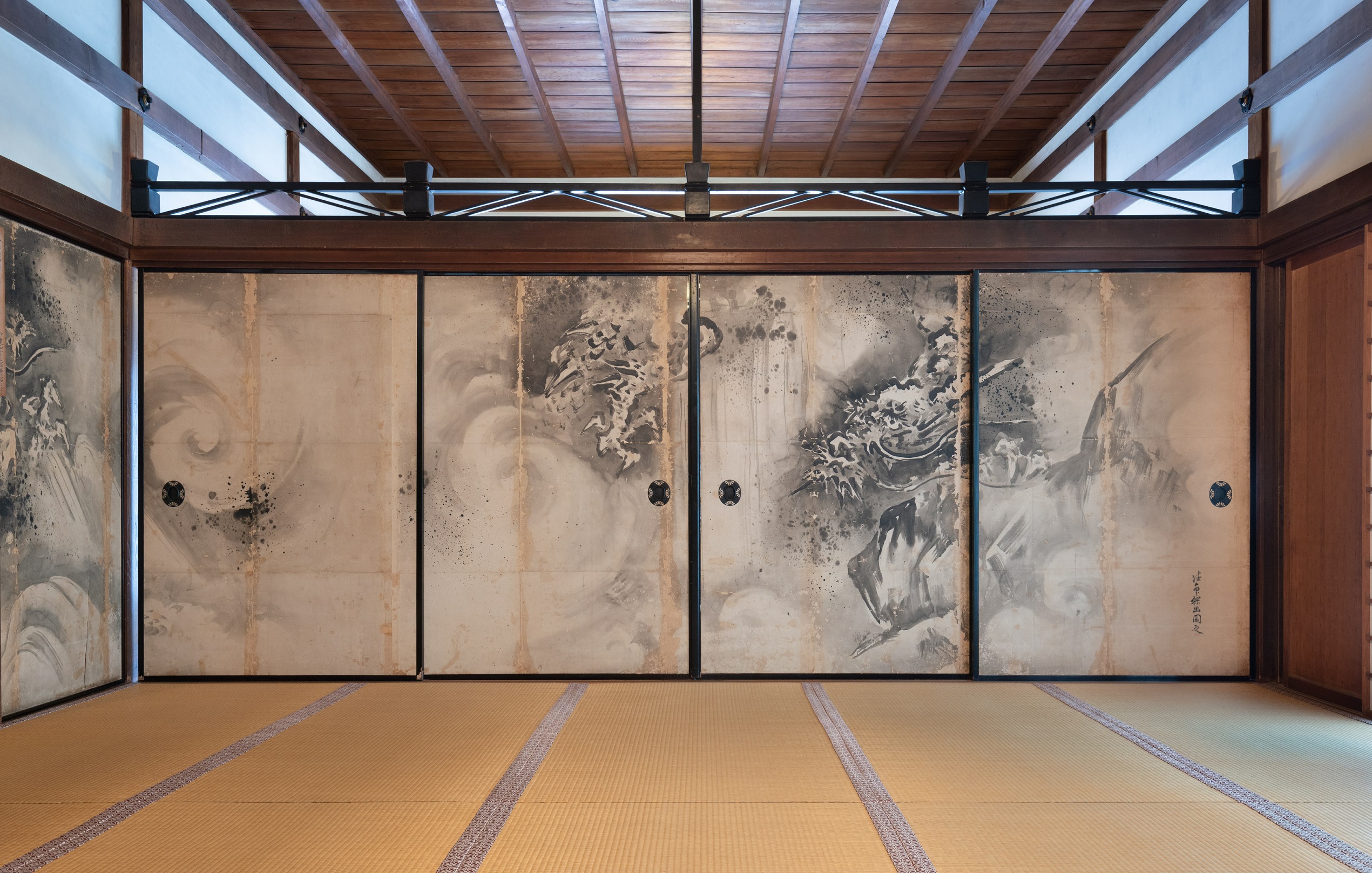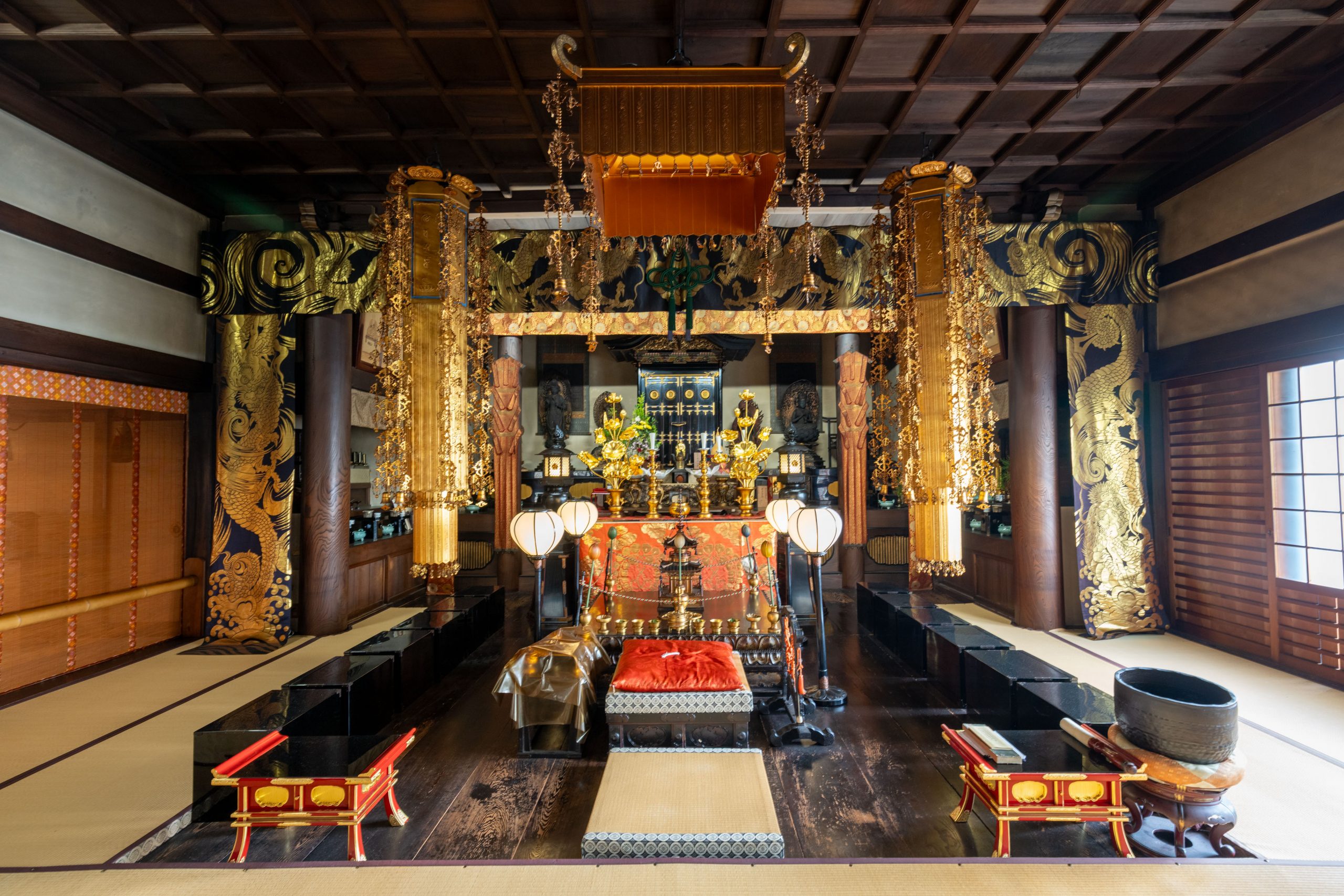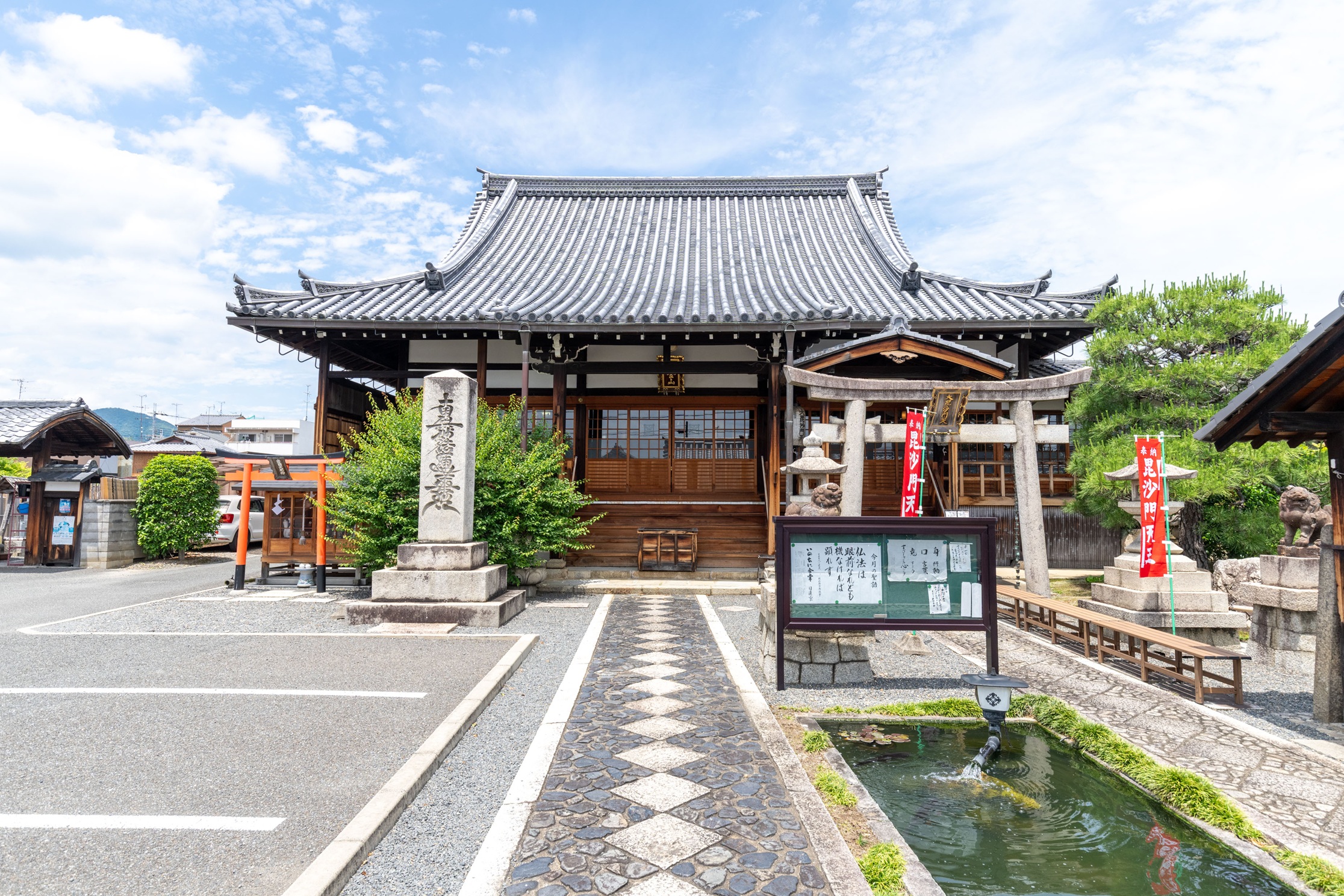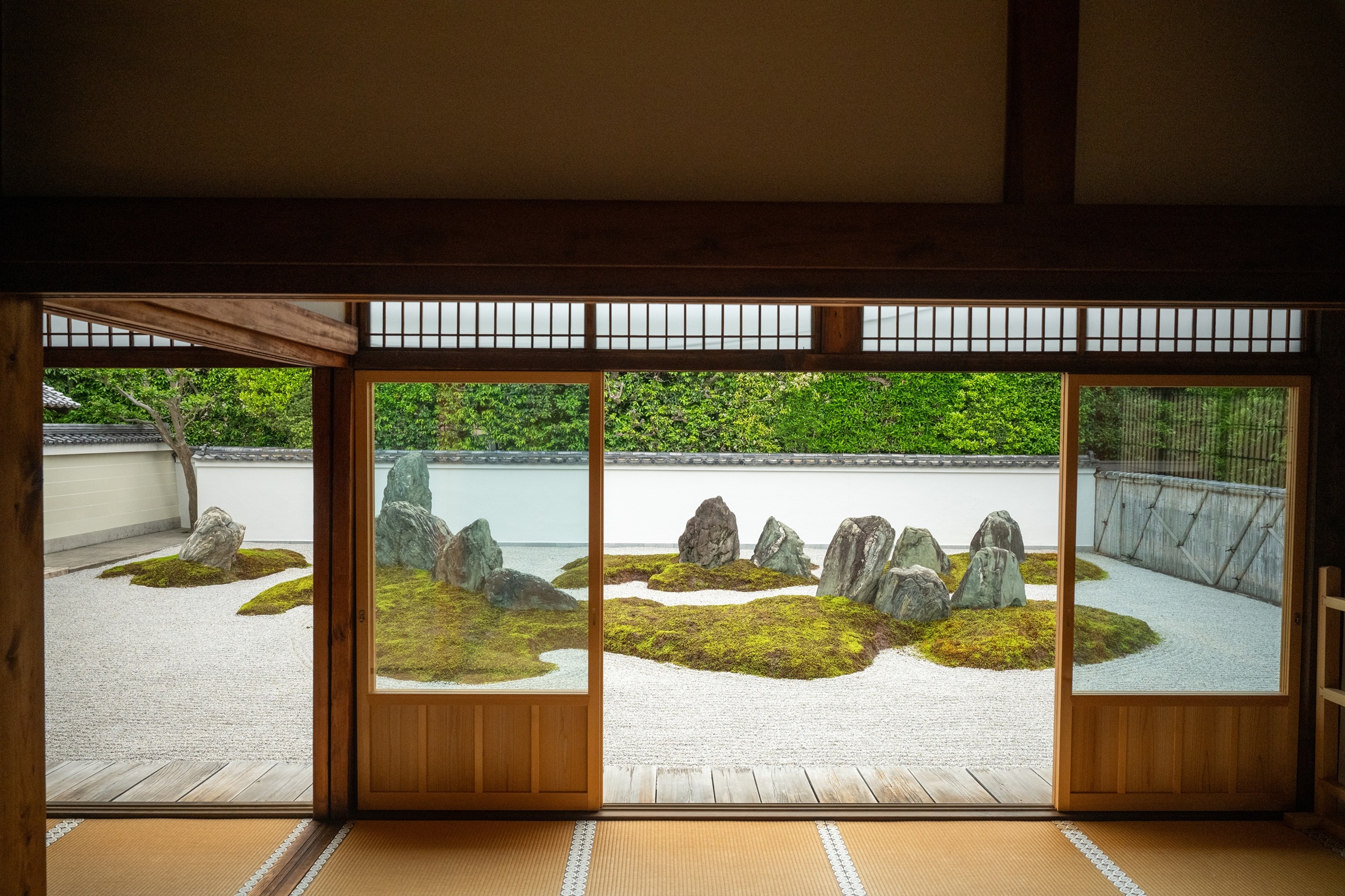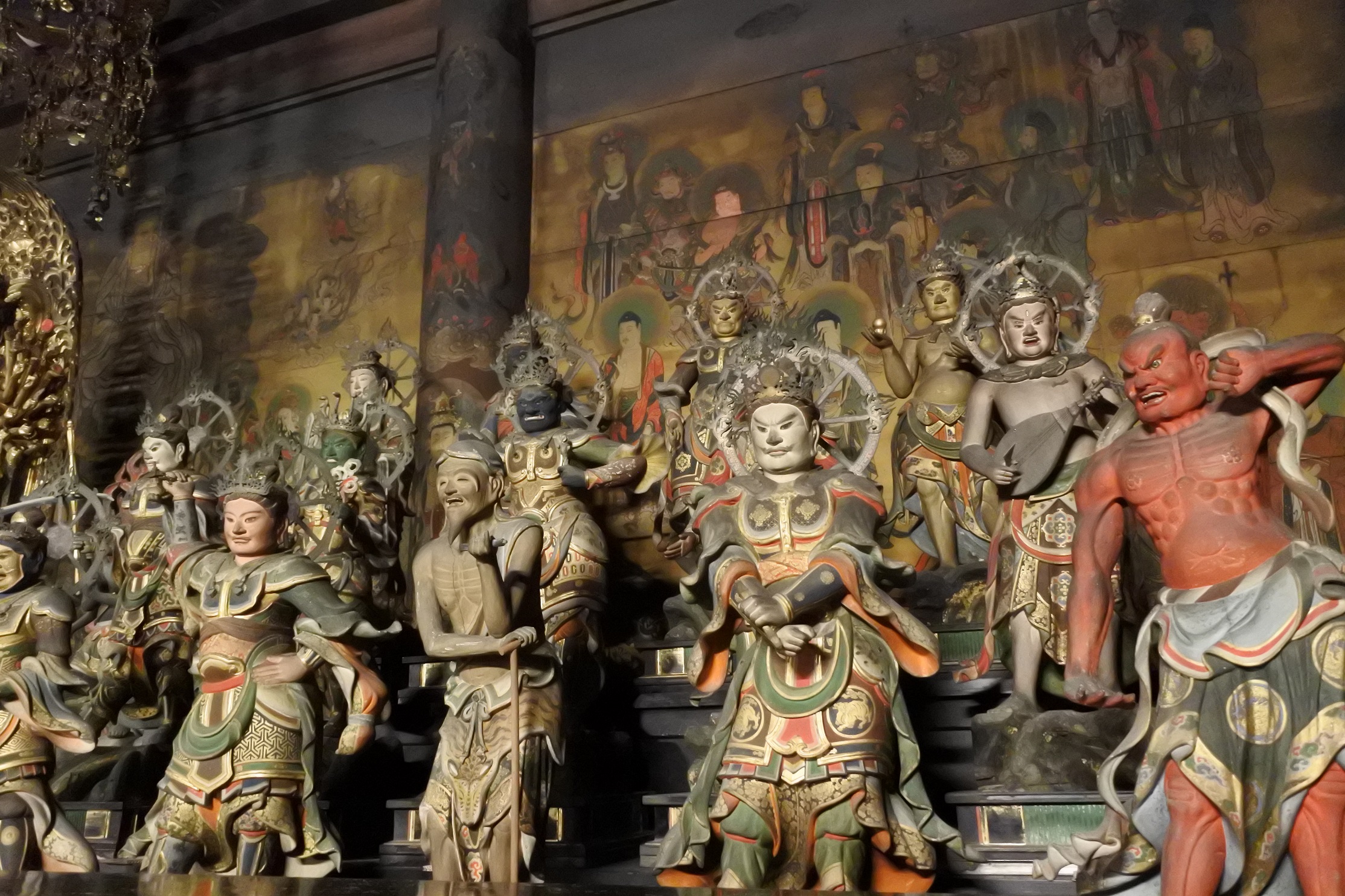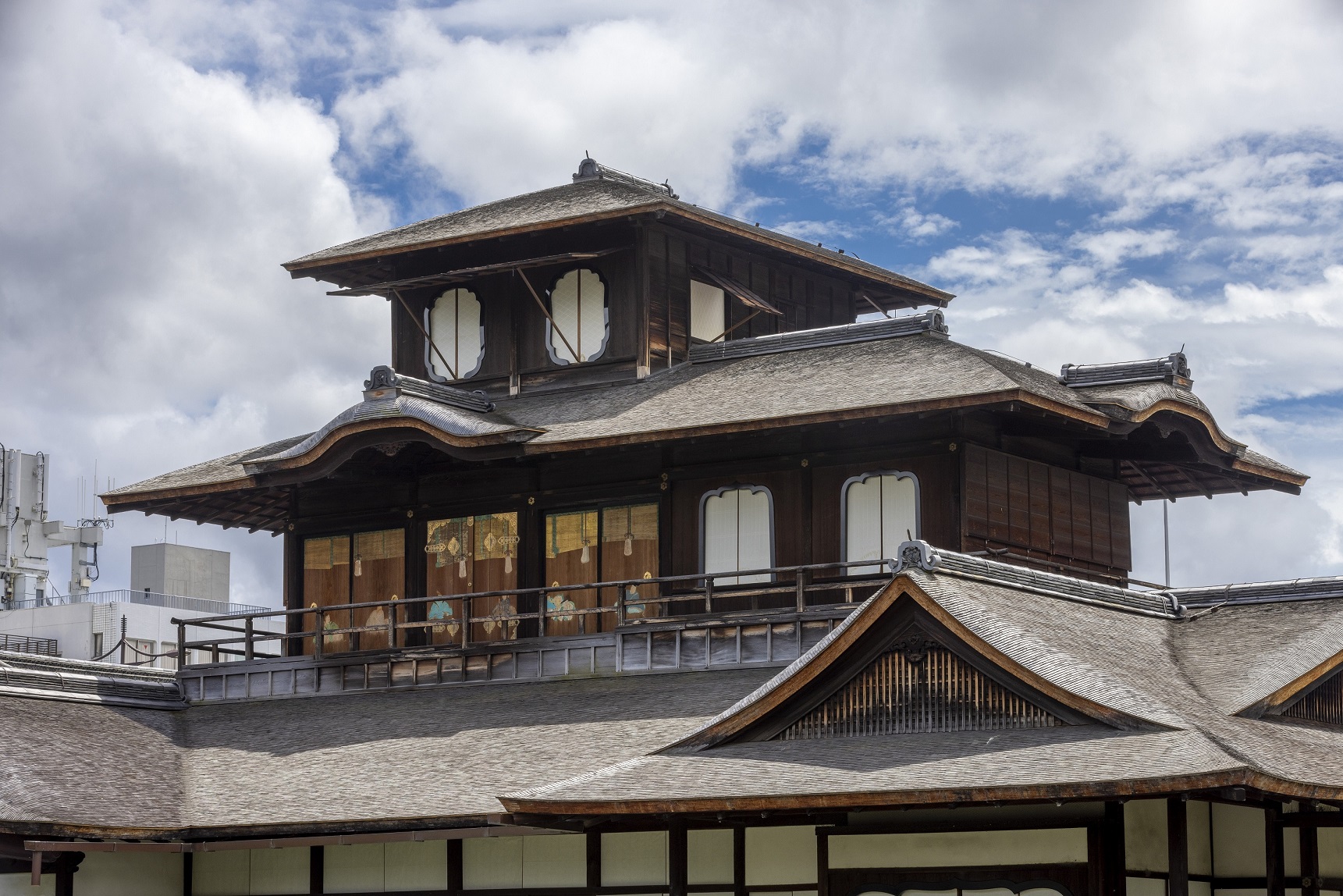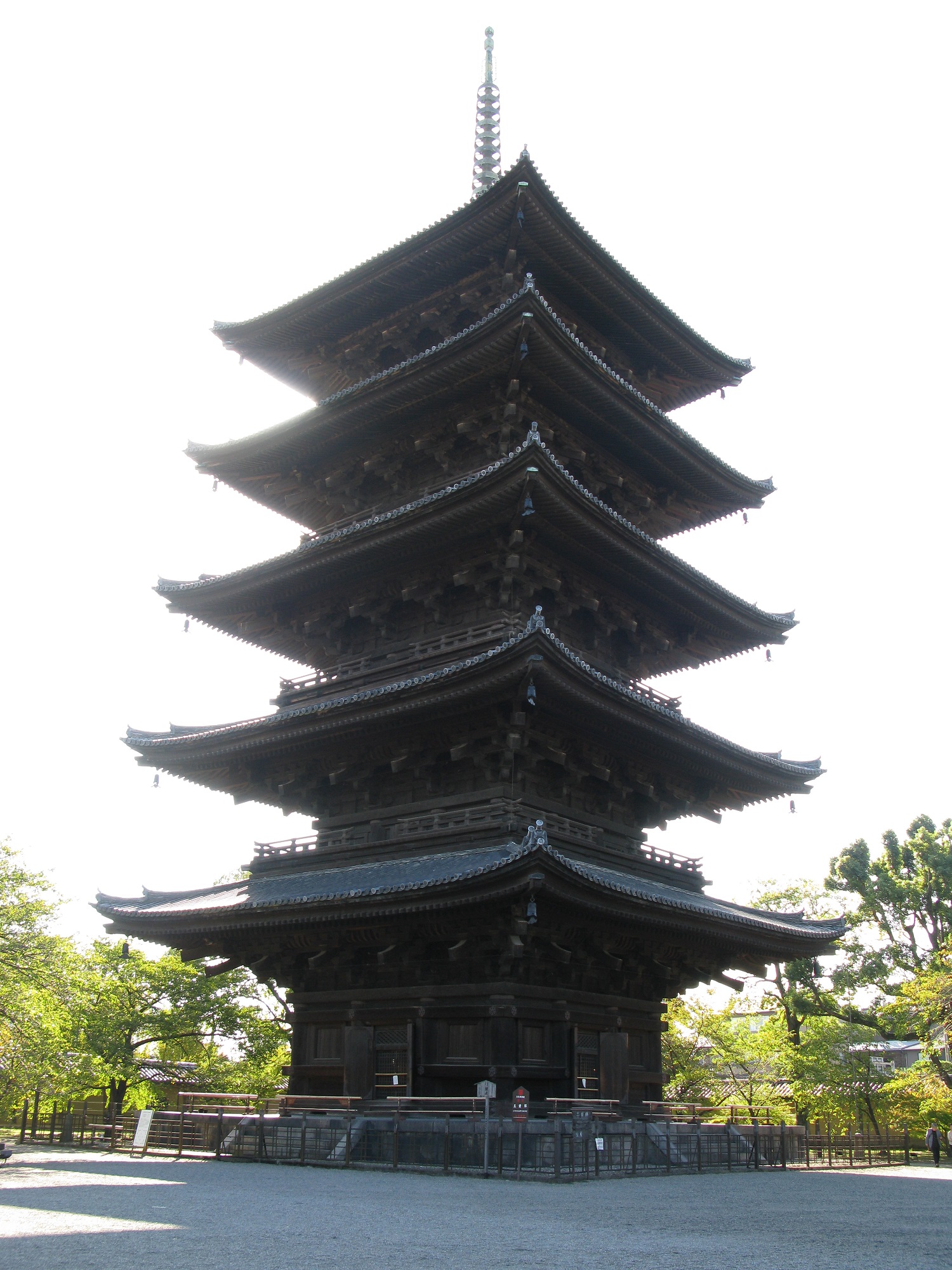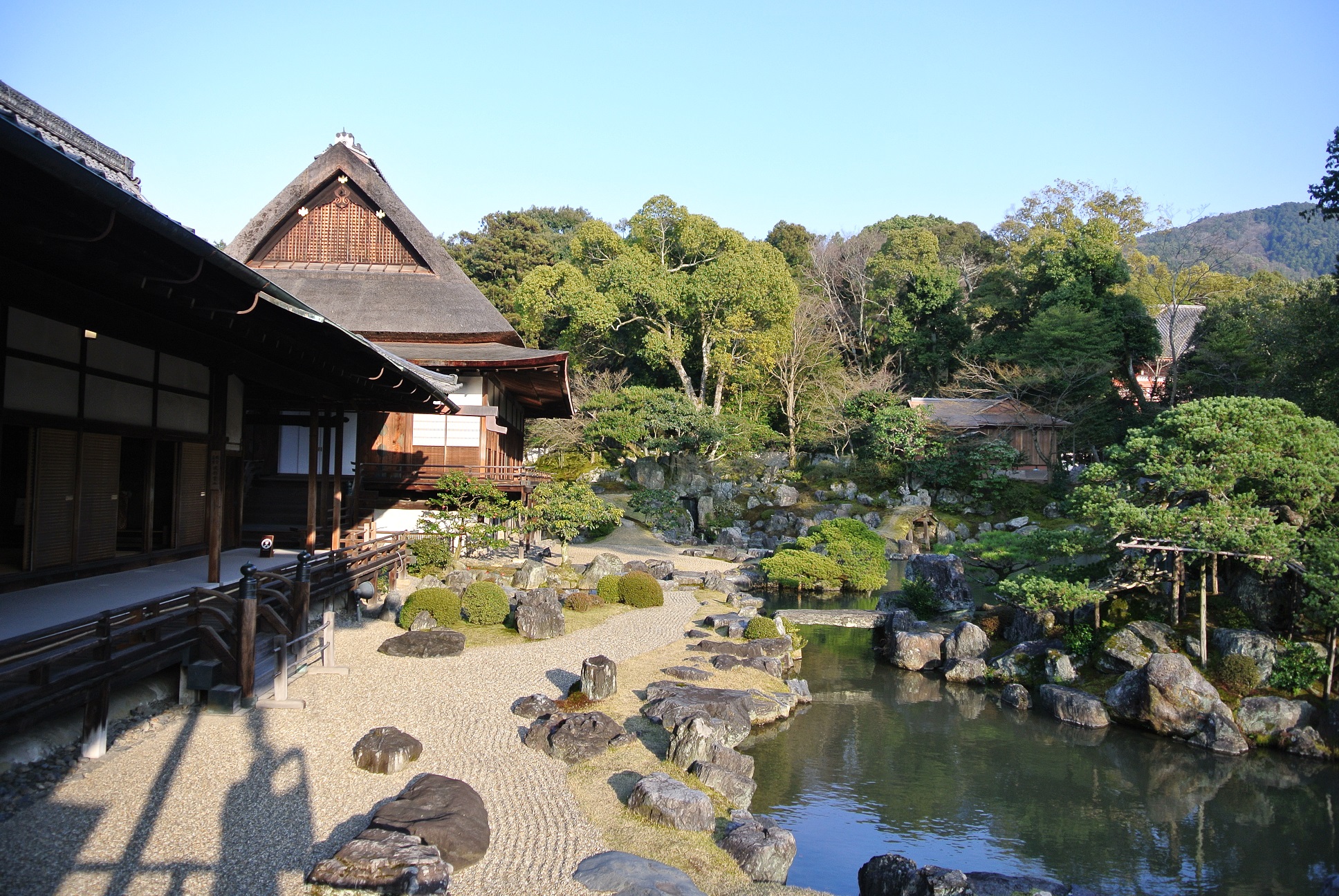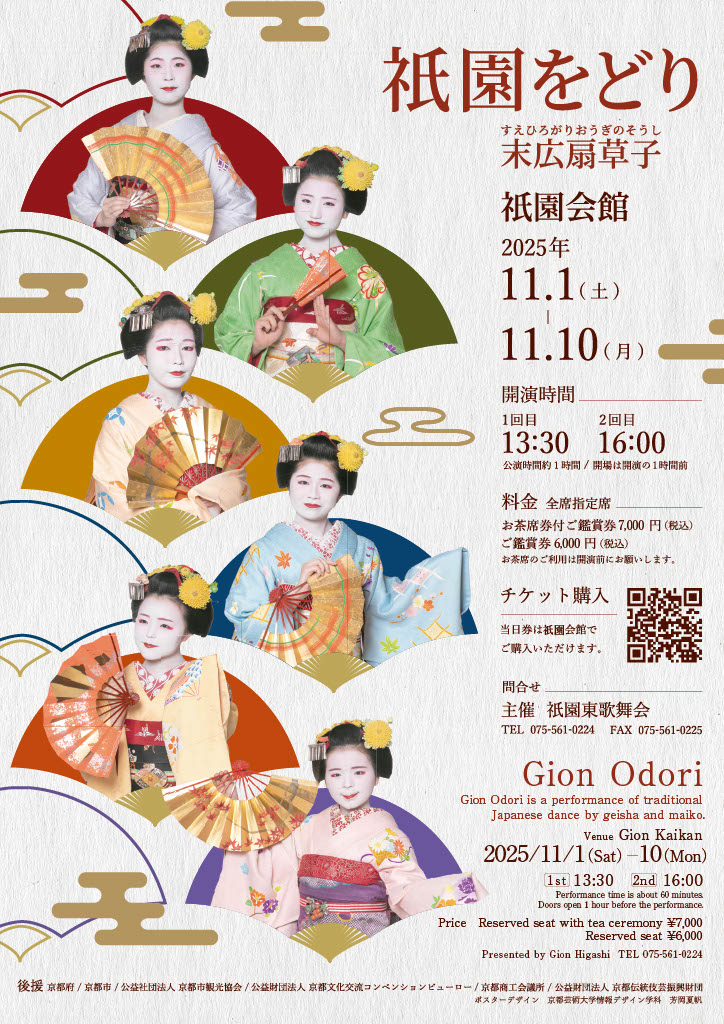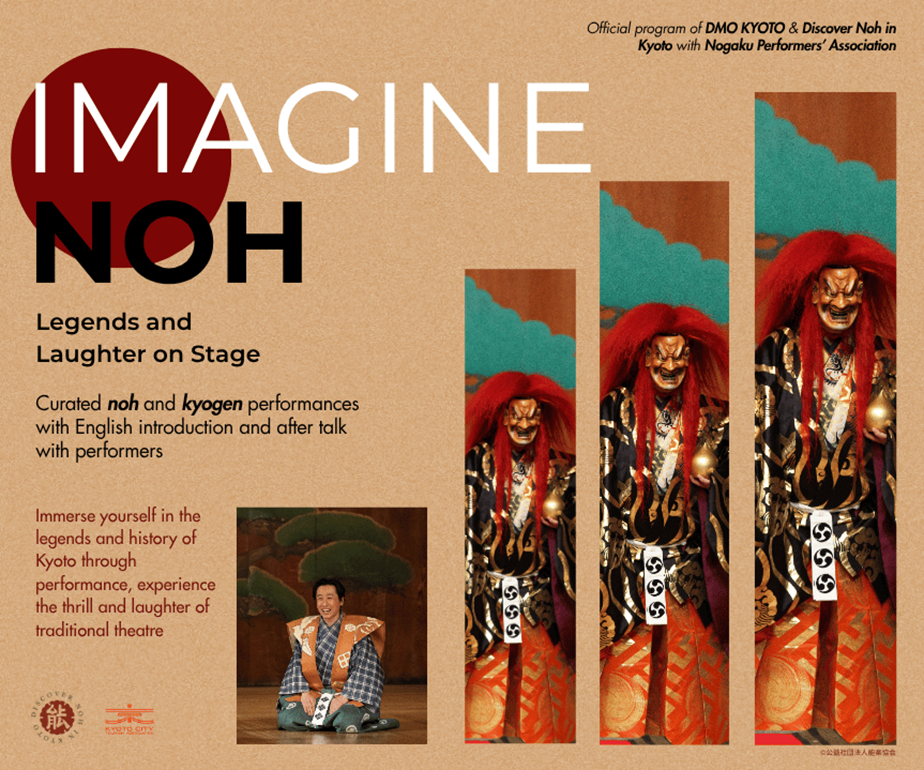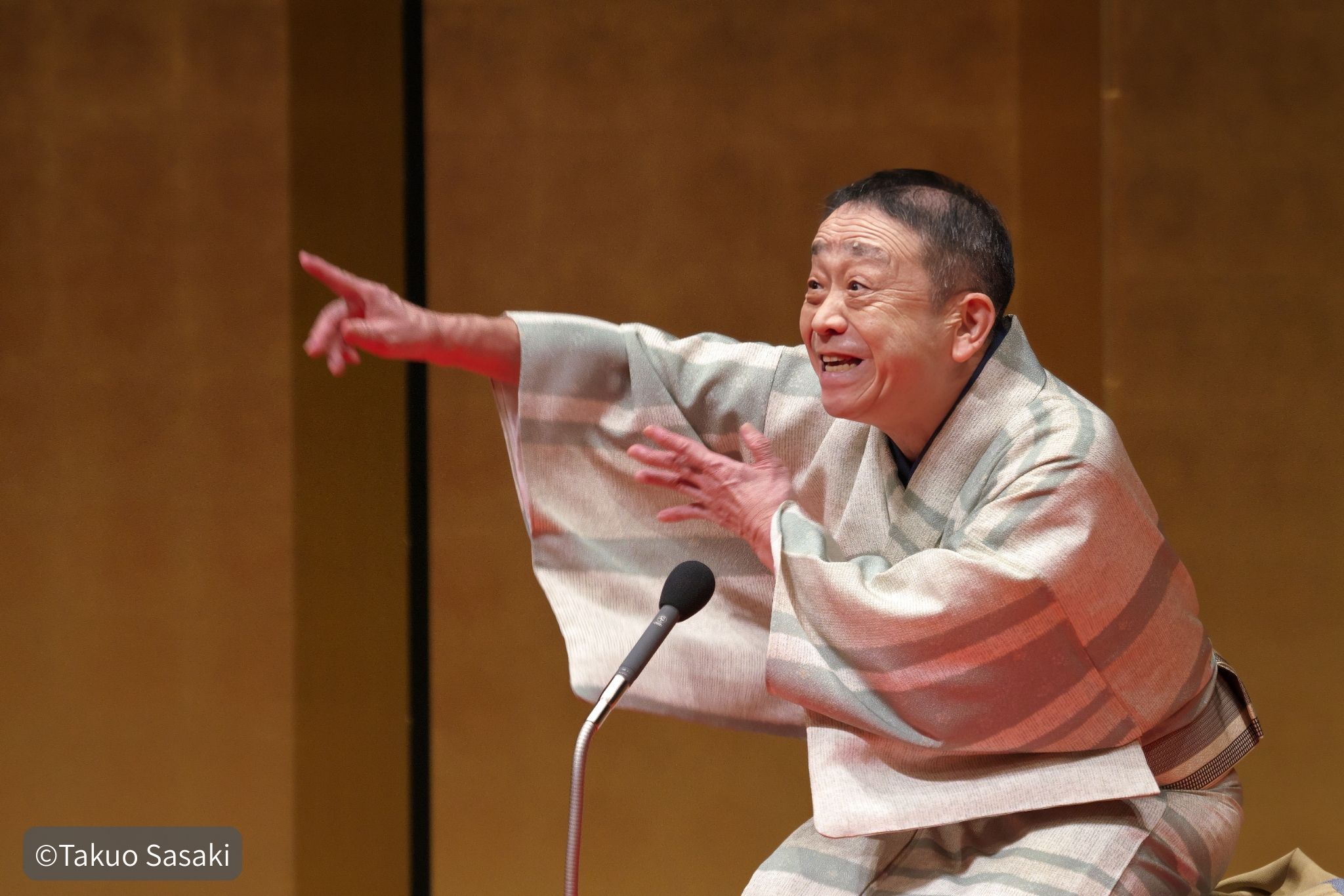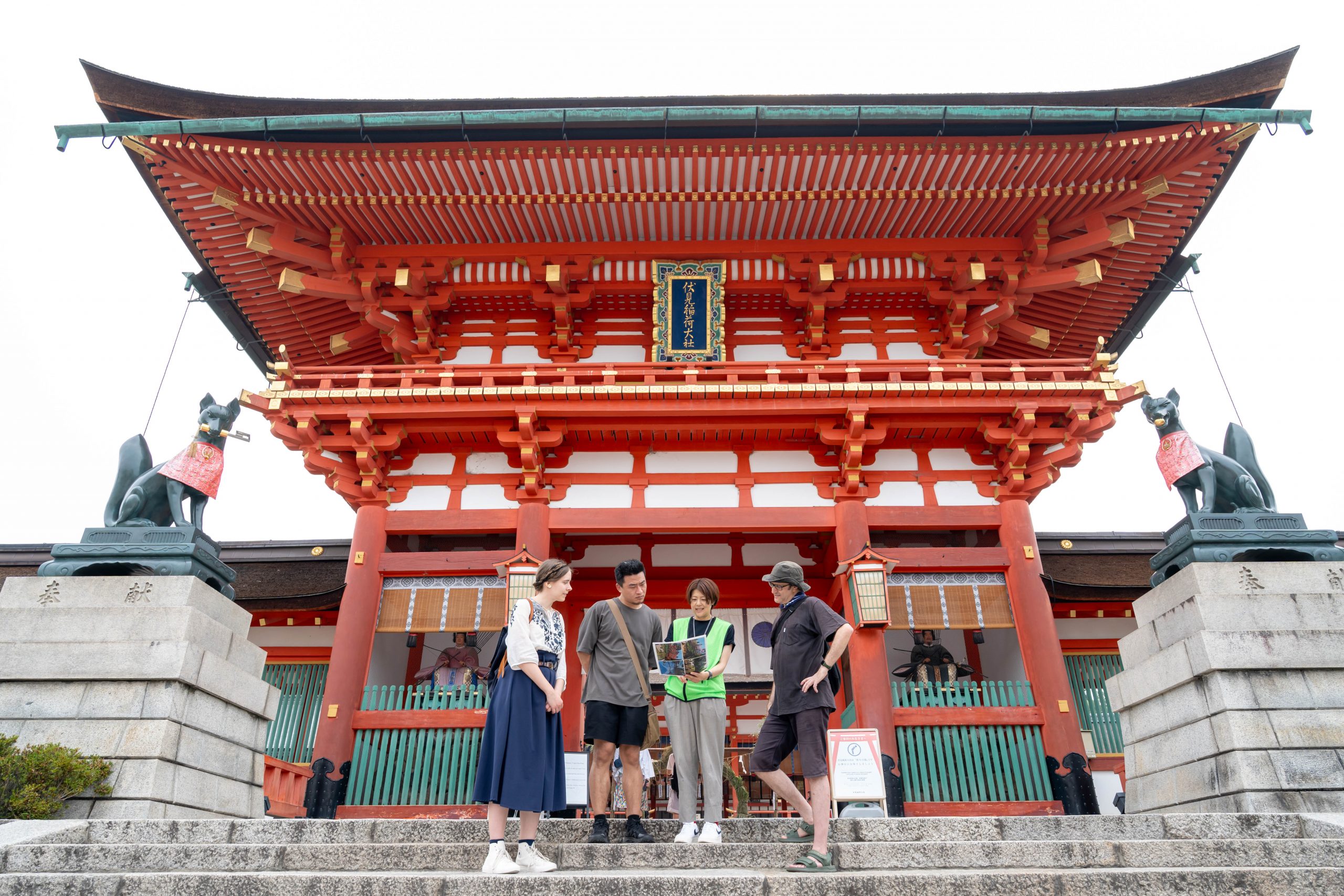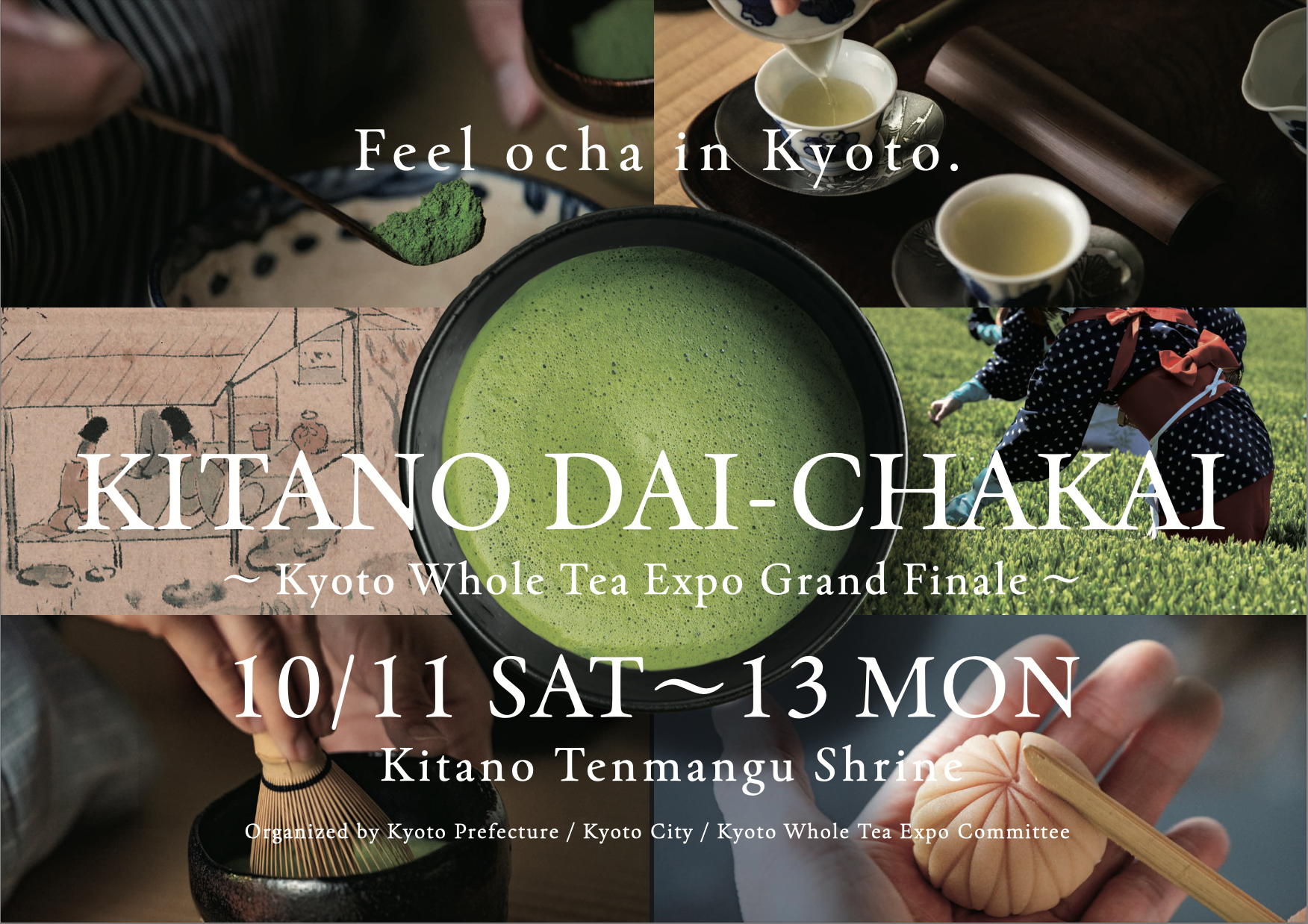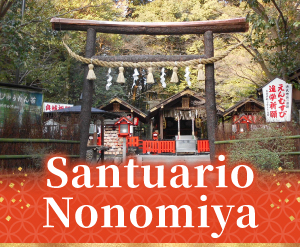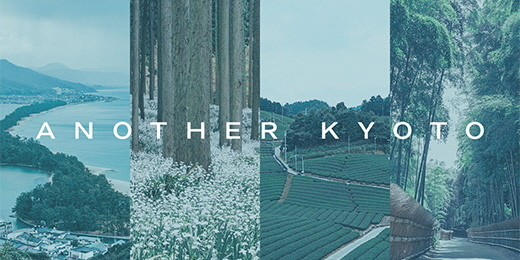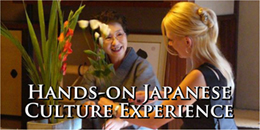Las Aperturas Especiales de Invierno de Kioto son un programa que permite visitar lugares especiales, como templos, santuarios y otros edificios históricos de importancia cultural en Kioto, durante un periodo limitado durante el invierno. El programa se desarrolla según diferentes temas cada año, promoviendo la apreciación temática de los bienes históricos y culturales. Si bien Kioto cuenta con numerosos sitios patrimoniales, incluyendo numerosos Tesoros Nacionales y Bienes Culturales Importantes, solo una pequeña parte de ellos se exhibe regularmente al público.
Una parte de las tarifas de entrada se utilizará para el mantenimiento y la preservación de estos sitios históricos y sus instalaciones, para que los bienes culturales puedan transmitirse a las generaciones futuras.
Fechas
Del 9 de enero (viernes) al 18 de marzo (miércoles) de 2026
Algunos lugares tienen horarios de apertura diferentes. Consulta la sección de cada lugar para obtener más información.
También puede haber fechas u horas en las que no sea posible la visita al público debido a ceremonias o condiciones meteorológicas (tifón, etc.). En este sitio web se publicará información actualizada, así que consúltela antes de su visita.
Horarios de apertura especiales
10:00 a 16:30 (última admisión 16:00)
*El horario varía según la ubicación. Consulta las secciones de cada ubicación para más información.
Tarifa de admisión (por plaza)
・Adultos: 800 yenes
・De 6 a 12 años: 400 yenes
*Gratis para niños de 5 años o menos.
*Las tarifas varían según el lugar. Consulte la sección de cada sitio para obtener más información.
NOTA
Durante su visita a templos, santuarios, etc., le pedimos que observe lo siguiente:
- No Fumar
- No beber
- No comer
- No se permiten fotografías en algunas zonas. Por favor, siga las instrucciones de cada lugar si desea tomar fotos. En algunos lugares, es posible que no se permitan fotografiar zonas u objetos relacionados con el culto religioso. Le pedimos su comprensión.
- Por favor, descuelgue su mochila o bolso de hombro o llévelo delante para proteger los bienes culturales. Si es posible, facture el equipaje grande. Evite visitar el lugar descalzo.
- Por favor, no toque ningún bien cultural (cuadros en mamparas, estatuas budistas, etc.).
*Algunos templos pueden estar cerrados para servicios budistas sin previo aviso.
*La orientación presencial solo está disponible en japonés. La información en inglés se proporcionará en formato impreso o digital.
Detalles
1. Templo Kodai-ji
2. Templo Hōkō-ji
3. Santuario Toyokuni-jinja, Salón Shoin y Salón del Tesoro
4. Templo Daitoku-ji, Salón Hatto y Salón Kyo-zo
5. Templo Daitoku-ji, Templo Daikō-in
6. Templo Nishijin Koshō-ji
7. Templo Fukushō-ji
8. Templo Kekō-ji
9. Templo Kōsei-ji
10. Sala Kannondo del templo Ninna-ji
11.Nishi Hongwan-ji Hiunkaku (Pabellón de las Nubes Voladoras)
12. Templo Tō-ji, Pagoda de cinco pisos
13.Templo Daigo-ji, Templo Sanbō-in
1. Templo Kodai-ji
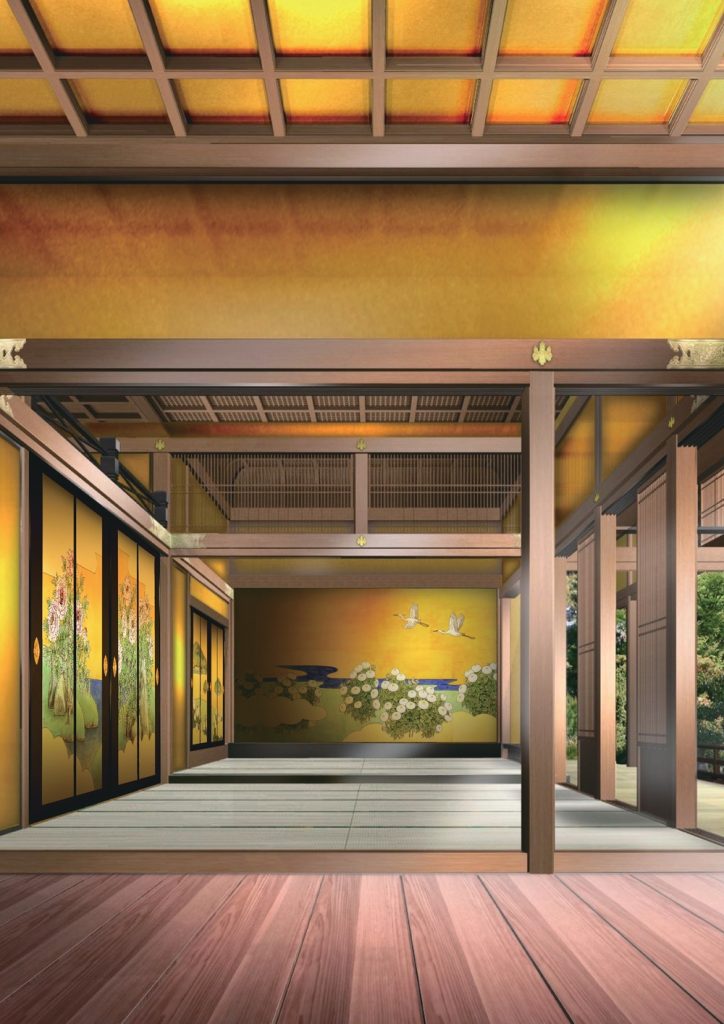
Vestíbulo — actualmente en reconstrucción (imagen conceptual)
El templo Kōdai-ji fue construido en 1606 por Lady Nene para rezar por el alma de su esposo, el señor de la guerra Toyotomi Hideyoshi, quien falleció tras la unificación de Japón. El templo cuenta con un jardín con un estanque y un bosquecillo de bambú, y alberga numerosas estructuras y tesoros que son obras maestras del vibrante estilo del período Momoyama (1568-1600), incluyendo las salas de té Kasa-tei y Shigure-tei, que fueron trasladadas aquí desde el castillo Fushimi, donde residió Hideyoshi.
En el pasado, también existía un magnífico salón de recepciones, originalmente construido por Hideyoshi para celebrar banquetes en el Castillo Fushimi y posteriormente trasladado aquí. Fue destruido por un incendio en 1789, pero ahora se está reconstruyendo por primera vez en 237 años. Si bien la reconstrucción no finalizará hasta el verano de 2026, quienes visiten el salón principal del templo durante estas Jornadas Especiales de Invierno podrán admirar las pinturas fusuma-e doradas creadas para decorar el salón restaurado una vez finalizada la obra. Asimismo, se exhibirán artesanías que Hideyoshi apreciaba, junto con valiosos tesoros del templo relacionados con los señores de la guerra del período Sengoku.
| Fechas | Del 9 de enero (viernes) al 4 de marzo (miércoles) de 2026 |
| Horas | 9:00 – 17:30 (Admisión hasta las 17:00) |
| Tarifa de admisión | Adultos: 600 yenes / De 12 a 18 años: 250 yenes (La tarifa incluye la entrada general) |
| Acceso | • Desde la estación Tofuku-ji de la línea JR Nara, tome la línea Keihan hasta la estación Gion-Shijo. A 15 minutos a pie de la estación. • Desde la estación de Kioto, tome el autobús urbano número 206 y bájese en Higashiyama Yasui. Está a 5 minutos a pie de la parada. |
2. Templo Hōkō-ji
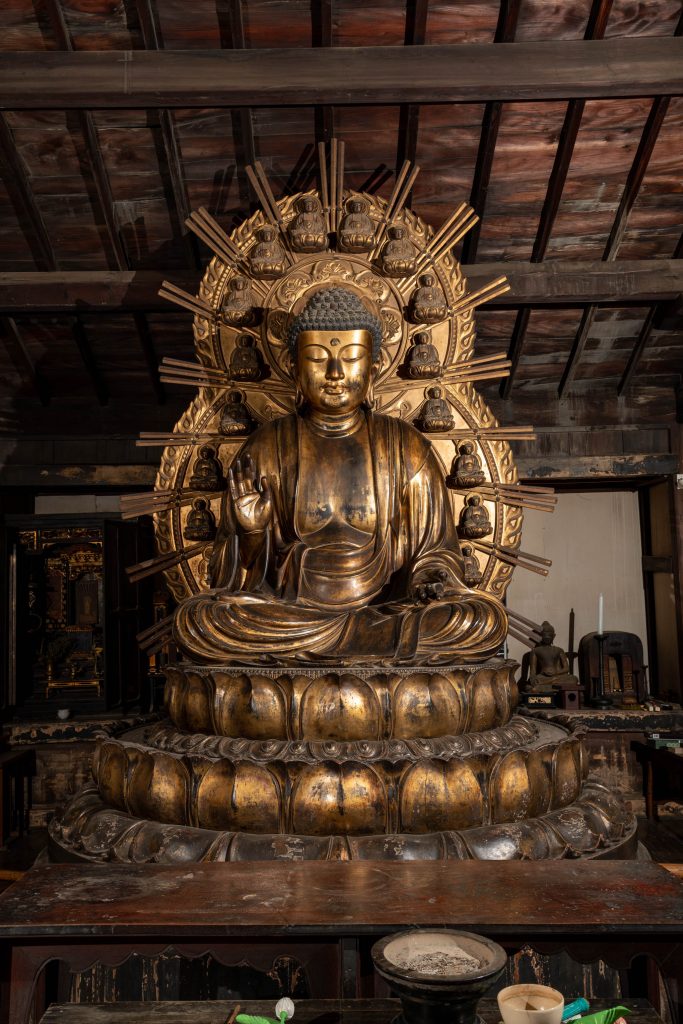
El templo Hōkō-ji fue construido por Toyotomi Hideyoshi para venerar una estatua gigante de Buda, a semejanza del templo Tōdai-ji en Nara. Se construyó un gran salón de culto que albergaba una estatua de diecinueve metros de altura, pero fue destruido por un incendio y reconstruido varias veces. Actualmente, el salón principal alberga la imagen principal del templo, una estatua de Rushana-butsu (Vairocana) sentado, de un décimo del tamaño de la estatua gigante original. Durante las Aperturas Especiales de Invierno de Kioto, se exhibirá al público una pequeña imagen de la deidad Daikokuten, del tamaño de la palma de la mano y muy apreciada por el propio Hideyoshi. Además, los visitantes podrán contemplar de cerca una campana gigante. Esta campana es considerada una de las «tres grandes campanas de Japón» por su tamaño, y también es conocida por un episodio en el que una inscripción en ella provocó un conflicto que desencadenó una guerra que, en última instancia, condujo a la desaparición de la familia Toyotomi.
| Fechas | Del 9 de enero (viernes) al 18 de marzo (miércoles) de 2026 |
| Horas | 10:00 – 16:30 (Entrada hasta las 16:00) |
| Tarifa | Adultos: 800 yenes / Niños de 6 a 12 años: 400 yenes |
| Acceso | • Desde la estación Tofuku-ji de la línea JR Nara, tome la línea Keihan hasta la estación Shichijo. A 10 minutos a pie de la estación. • Desde la estación de Kioto, tome el autobús urbano n.° 206 o n.° 208 y bájese en Hakubutsukan Sanjusangendomae. Está a 5 minutos a pie de la parada. |
3. Santuario Toyokuni-jinja, Salón Shoin y Salón del Tesoro
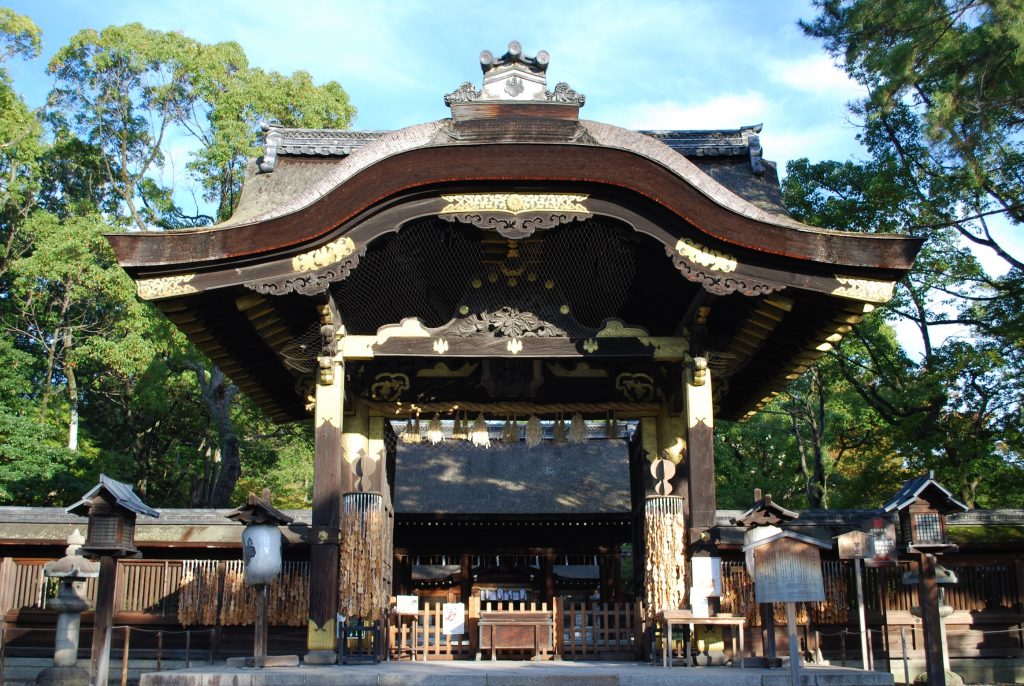
El santuario Toyokuni-jinja, dedicado a Toyotomi Hideyoshi, es un lugar famoso para rezar por el éxito profesional, la buena fortuna y para encontrar buenas relaciones. Su puerta a dos aguas (karamon), construida alrededor del siglo XVI, presenta elaboradas tallas de carpas y grullas y está catalogada como Tesoro Nacional.
Durante las Aperturas Especiales de Invierno de Kioto, se abrirá al público una sala de recepción (shoin) donde se exhibirán objetos especiales como un haori que perteneció a Hideyoshi y un biombo Rakuchū-Rakugai-zu que representa un mapa de Kioto. Además, se podrá visitar la Sala del Tesoro del santuario para admirar objetos como una almohada de madera con forma de baku (criatura mitológica que devora sueños) usada por Hideyoshi, así como una muela suya. También se exhibirá el biombo Toyokuni Sairei-zu (Bien de Interés Cultural), que representa la magnífica sala de estatuas que existió en su día, y el Honebami-Tōshirō, una hermosa espada wakizashi con la hoja grabada con un dragón y Fudō Myōō (la deidad Acala).
*Honebami-Tōshirō Se exhibirá hasta el 3 de febrero (martes); después de esta fecha, se exhibirá una réplica en lugar del original.
| Fechas | Del 9 de enero (viernes) al 18 de marzo (miércoles) de 2026 |
| Horas | 9:00 – 16:30 (Entrada hasta las 16:00) |
| Tarifa de admisión | Adultos: 1.000 yenes / Niños de 6 a 12 años: 500 yenes |
| Acceso | • Desde la estación Tofuku-ji de la línea JR Nara, tome la línea Keihan hasta la estación Shichijo. A 10 minutos a pie de la estación. • Desde la estación de Kioto, tome el autobús urbano n.° 206 o n.° 208 y bájese en Hakubutsukan Sanjusangendo-mae. Está a 5 minutos a pie de la parada. |
4. Templo Daitoku-ji, Salón Hatto y Salón Kyo-zo
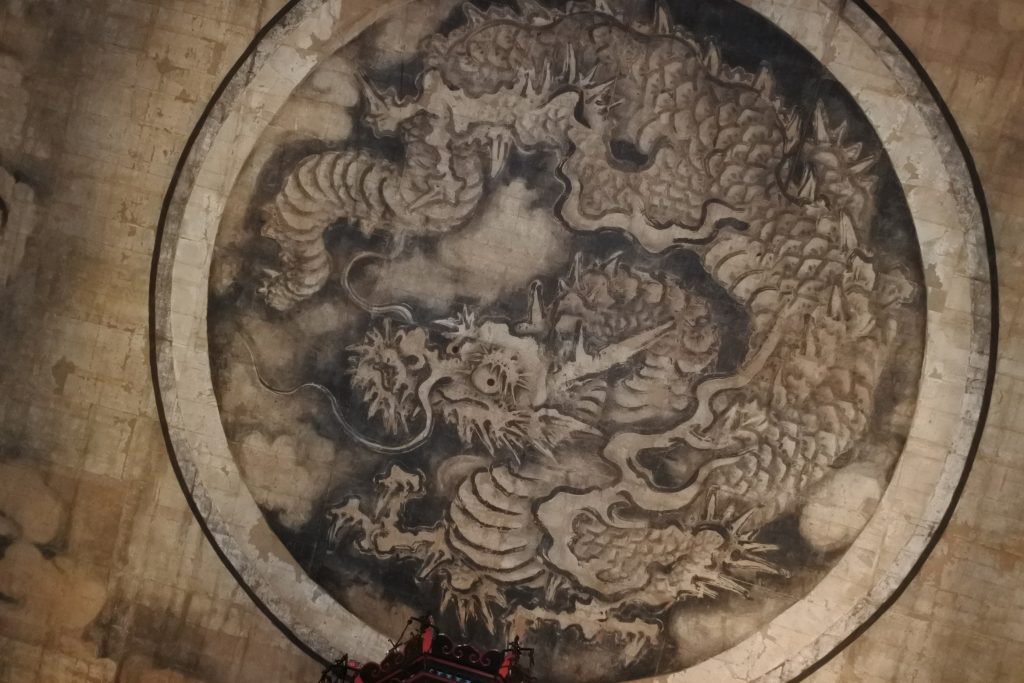
Daitoku-ji es un templo zen que cumplirá septuagésimo aniversario de su fundación en 2026.
La mayoría de los edificios del templo principal suelen estar cerrados al público, pero las visitas al Hattō (Salón del Dharma) estarán permitidas durante las Aperturas Especiales de Invierno de Kioto. En el techo del Hattō se representa un dragón. Esta obra, pintada por el pintor del siglo XVII Kanō Tan'yū, es conocida como el «dragón rugiente» porque el sonido reverberante que se produce al aplaudir en el salón se asemeja al rugido de un dragón. El Kyo-zo, que también estará abierto al público, alberga un depósito de sutras con un armario octogonal de cuatro metros de altura que contiene 3500 sutras. Se dice que girar este armario una vez otorga méritos budistas equivalentes a los de leer todos los sutras que contiene.
| Fechas | Del 9 de enero (viernes) al 18 de marzo (miércoles) de 2026 |
| Horas | 10:00 – 16:30 (Entrada hasta las 16:00) |
| Tarifa de admisión | Adultos: 800 yenes / Niños de 6 a 12 años: 400 yenes |
| Acceso | • Desde la estación Nijo de la línea JR Sagano, tome el autobús urbano n.° 206 y bájese en Daitokuji-mae. Hay que caminar 7 minutos desde la parada de autobús. Desde la estación de Kioto, tome la línea Karasuma del metro hasta la estación Kitaoji, luego tome el autobús urbano n.° 204, n.° 205 o n.° 206 y bájese en Ditokuji-mae. Hay que caminar 7 minutos desde la parada de autobús. |
5. Templo Daitoku-ji, Templo Daikō-in
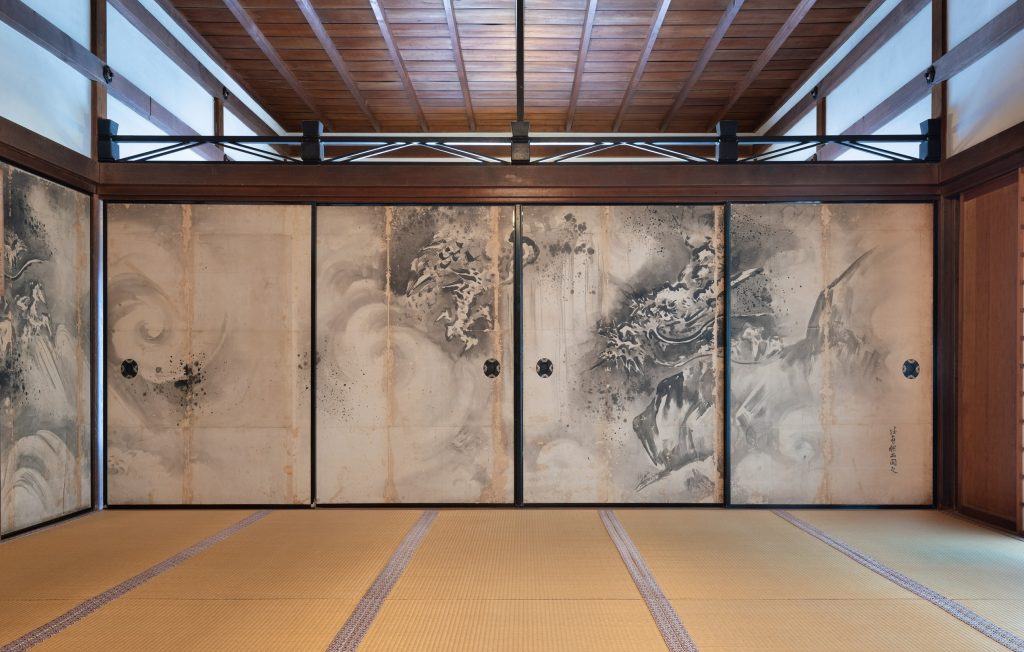
El templo Daikō-in se construyó originalmente en Nara para rezar por el alma de Hidenaga, el hermano menor de Toyotomi Hideyoshi, y posteriormente se trasladó al templo Daitoku-ji. El edificio actual se construyó durante el período Edo y se reubicó tal cual en su emplazamiento actual.
El salón principal del templo alberga una estatua de madera de Hidenaga, y un Koku-Unryū-zu (una pintura de un dragón entre nubes oscuras) decora las puertas correderas fusuma. Se cree que esta pintura es obra de Kanō Tan'yū, un destacado pintor del siglo XVII, y originalmente era un byōbu-e (biombo) antes de ser colocada en estas puertas. Además, Hoan, una pequeña sala de té con una superficie equivalente a tres tatamis, también estará abierta al público.
| Fechas | Del 9 de enero (viernes) al 18 de marzo (miércoles) de 2026 *Cerrado al público del 15 (domingo) al 17 (martes) de febrero. |
| Horas | 10:00 – 16:30 (Entrada hasta las 16:00) |
| Tarifa de admisión | Adultos: 800 yenes / Niños de 6 a 12 años: 400 yenes |
| Acceso | • Desde la estación Nijo de la línea JR Sagano, tome el autobús urbano n.° 206 y bájese en Kenkunjinja-mae. Está a 2 minutos a pie de la parada. Desde la estación de Kioto, tome la línea Karasuma del metro hasta la estación Kitaoji, luego tome el autobús urbano n.° 204, n.° 205 o n.° 206 y bájese en Kenkunjinja-mae. Está a 2 minutos a pie de la parada de autobús. |
6. Templo Nishijin Koshō-ji
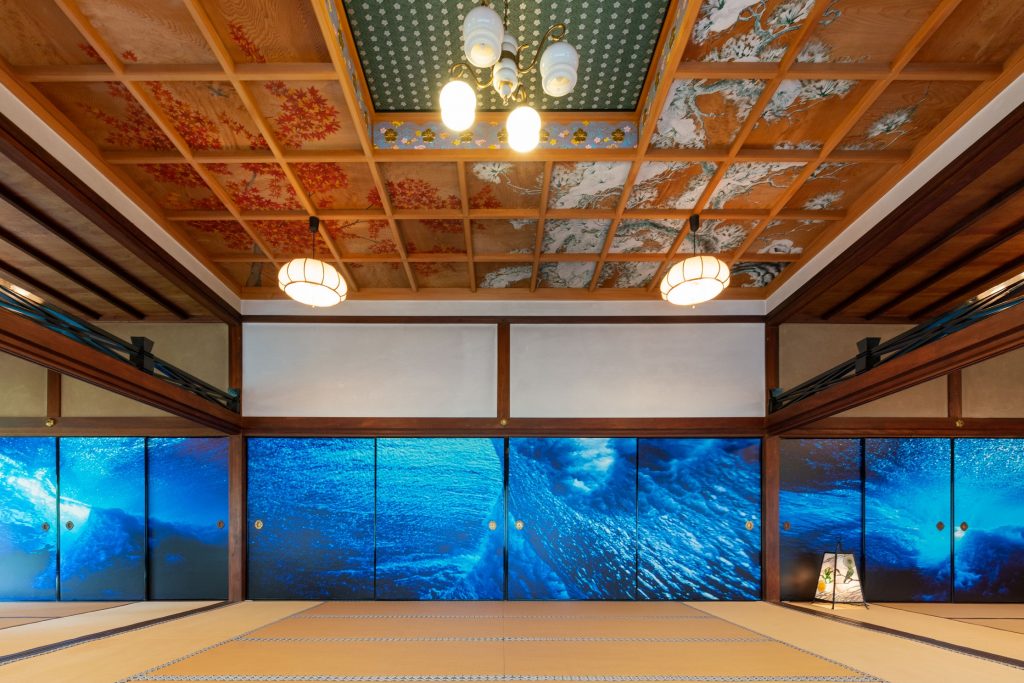
El templo Nishijin Kōshō-ji está asociado a Furuta Oribe, un guerrero al servicio de Oda Nobunaga y Toyotomi Hideyoshi. Oribe fue un maestro de la ceremonia del té conocido por su estética libre y creativa, y fundó la Escuela Oribe de dicha ceremonia.
El techo de la sala principal luce un Unryū-zu, una pintura de un dragón entre nubes, y la imagen principal que alberga es la de Buda Shakyamuni. Durante la Apertura Especial de Invierno de Kioto, se exhibe al público un gran Daruma-zu, uno de los retratos más grandes de Bodhidharma en Japón, que normalmente se muestra solo una vez al año en un día especial de octubre. Bodhidharma fue un monje considerado el fundador del budismo zen en China.
Otros atractivos incluyen puertas corredizas decoradas con fotografías que capturan escenas de luz bajo el mar azul y un salón de té que cuenta con una pila de agua de piedra (tsukubai) colocada en un terreno profundamente excavado.
| Fechas | Del 9 de enero (viernes) al 18 de marzo (miércoles) de 2026 |
| Horas | 10:00 – 16:30 (Entrada hasta las 16:00) |
| Tarifa de admisión | Adultos: 800 yenes / Niños de 6 a 12 años: 400 yenes |
| Acceso | • Desde la estación de Kioto, tome la línea Karasuma del metro urbano hasta la estación Kuramaguchi y salga por la salida n.° 1. Caminata de 13 minutos desde la estación. Desde la estación de Kioto, tome el autobús urbano número 9 y bájese en Tenjinkoen-mae. Está a 1 minuto a pie de la parada. |
7. Templo Fukushō-ji
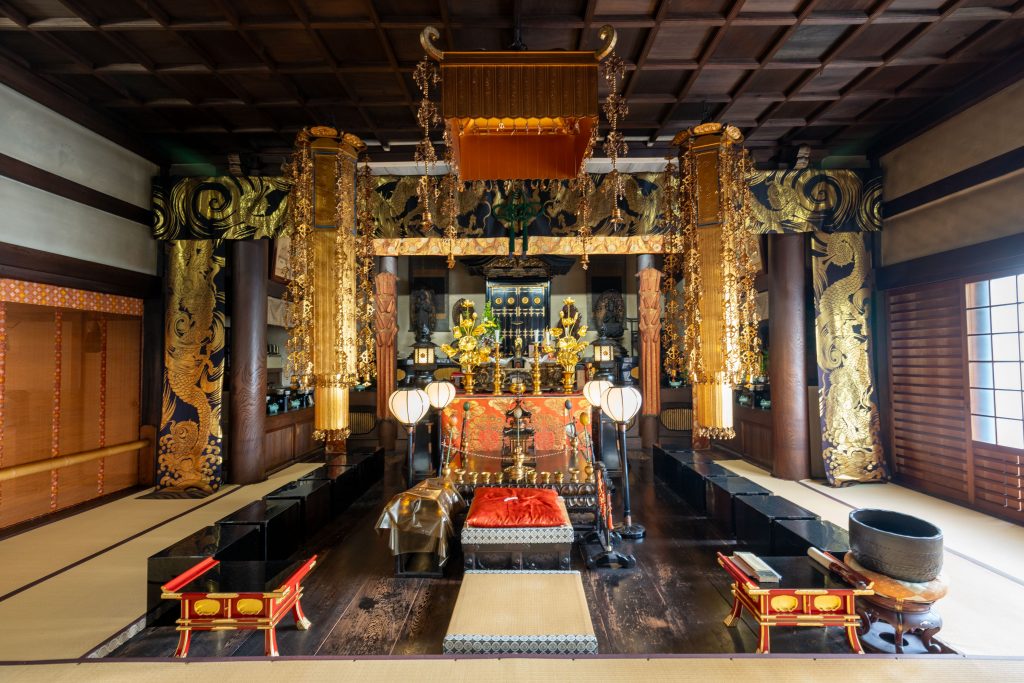
Se dice que el templo Fukushō-ji fue fundado por el famoso sacerdote Kūkai (774-835) y es uno de los Treinta y Tres Lugares de Culto a Kannon en Kioto.
La sala principal alberga varias estatuas budistas antiguas, una de las cuales es un Shō-Kannon-Bosatsu, el “Santo Kannon Bodhisattva”, que tiene más de mil años.
Además, a la derecha del salón principal se encuentra el Shōten-dō, que alberga un pequeño santuario cilíndrico con una estatua de Kangiten, una imagen budista oculta venerada por Toyotomi Hideyoshi. Cada vez que había una batalla, Hideyoshi ofrecía una calabaza (hyōtan) en este salón para pedir la victoria. Tras cada victoria, se llevaba la calabaza a casa. A medida que acumulaba estas calabazas, las usaba como símbolo (umajirushi) para distinguir entre amigos y enemigos en el campo de batalla. Por este motivo, a Fukushōji se le conoce a veces como «Hyōtan-dera» («Templo de la Calabaza»). Actualmente, el templo es muy conocido como un lugar propicio para rezar por la seguridad, la buena salud y la prosperidad económica.
| Fechas | Del 9 de enero (viernes) al 18 de marzo (miércoles) de 2026 *Cerrado al público el 16 de enero (viernes), 19 de enero (lunes), del 1 de febrero (domingo) al 4 de febrero (miércoles), 16 de febrero (lunes), 1 de marzo (domingo) y 16 de marzo (lunes). |
| Horas | 10:00 – 16:30 (Entrada hasta las 16:00) |
| Tarifa de admisión | Adultos: 800 yenes / Niños de 6 a 12 años: 400 yenes |
| Acceso | • Desde la estación de Kioto o desde la estación Nijo de la línea JR Sagano, camine 15 minutos desde la estación o tome el autobús urbano n.° 52 y bájese en Shichihonmatsu Demizu. La parada de autobús está a 3 minutos a pie. • Desde la estación de Kioto, tome el autobús urbano n.° 6 o n.° 206 y bájese en Senbon Demizu. Hay que caminar 3 minutos desde la parada de autobús. |
8. Templo Kekō-ji
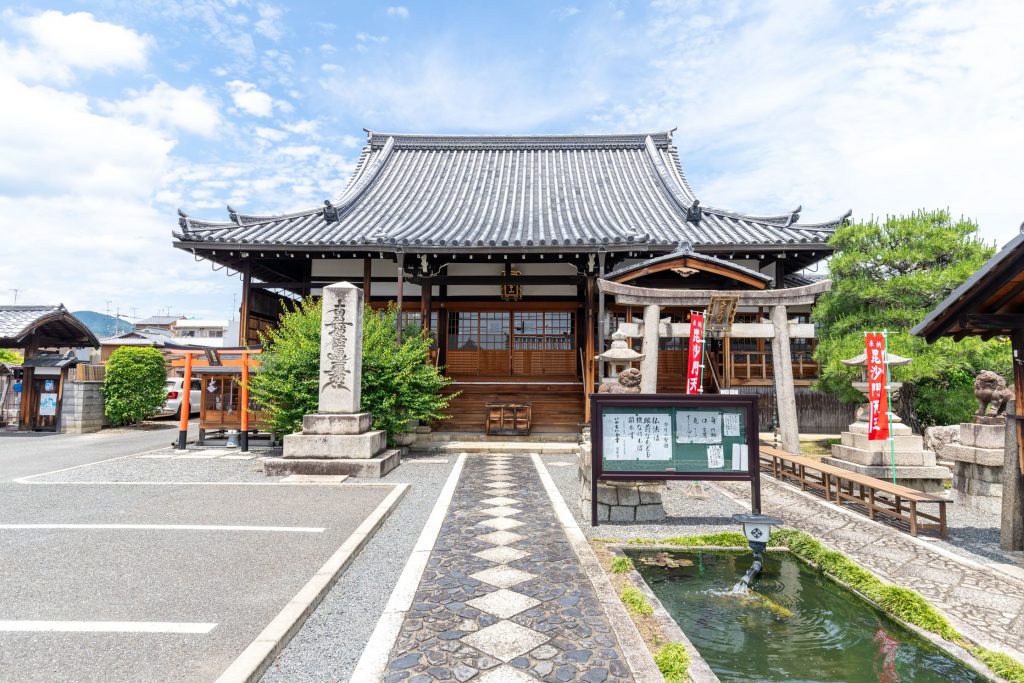
El templo Kekō-ji fue construido en 1583 bajo el patrocinio de Toyotomi Hideyoshi.
Los visitantes pueden contemplar una estatua de la deidad Bishamon-ten. Esta estatua de madera, que se cree fue creada durante el período Heian (794-1185), mide aproximadamente 160 centímetros de altura y está vestida con armadura. Se dice que fue venerada por Hideyoshi en el castillo de Fushimi y se ha popularizado como una estatua para pedir buena fortuna.
Se cree que la puerta del templo también fue trasladada aquí desde el castillo de Fushimi en el momento de la fundación del templo.
En el salón (shoin) se encuentra el viejo tocón de un pino plantado originalmente por Hideyoshi. El árbol era conocido como el «Pino de la Llovizna» («Shigure Matsu») porque misteriosamente caían gotas de agua de él incluso en días soleados, y se considera una de las «siete maravillas» de la zona de Demizu-dori, donde se ubica Kekōji.
Las pinturas y otros tesoros del templo también se mostrarán al público de forma especial.
| Fechas | Del 9 de enero (viernes) al 18 de marzo (miércoles) de 2026 *Cerrado al público el 1 de febrero (domingo). *Abre a las 13:00 el 1 de marzo (domingo). |
| Horas | 10:00 – 16:30 (Entrada hasta las 16:00) |
| Tarifa de admisión | Adultos: 800 yenes / Niños de 6 a 12 años: 400 yenes |
| Acceso | • Desde la estación de Kioto o desde la estación Nijo de la línea JR Sagano, a 15 minutos a pie de la estación, o bien, tome el autobús urbano n.º 52 y bájese en Shichihonmatsu Demizu. A 2 minutos a pie de la parada de autobús. • Desde la estación de Kioto, tome el autobús urbano n.° 6 o n.° 206 y bájese en Senbon Demizu. Hay que caminar 4 minutos desde la parada de autobús. |
9. Templo Kōsei-ji
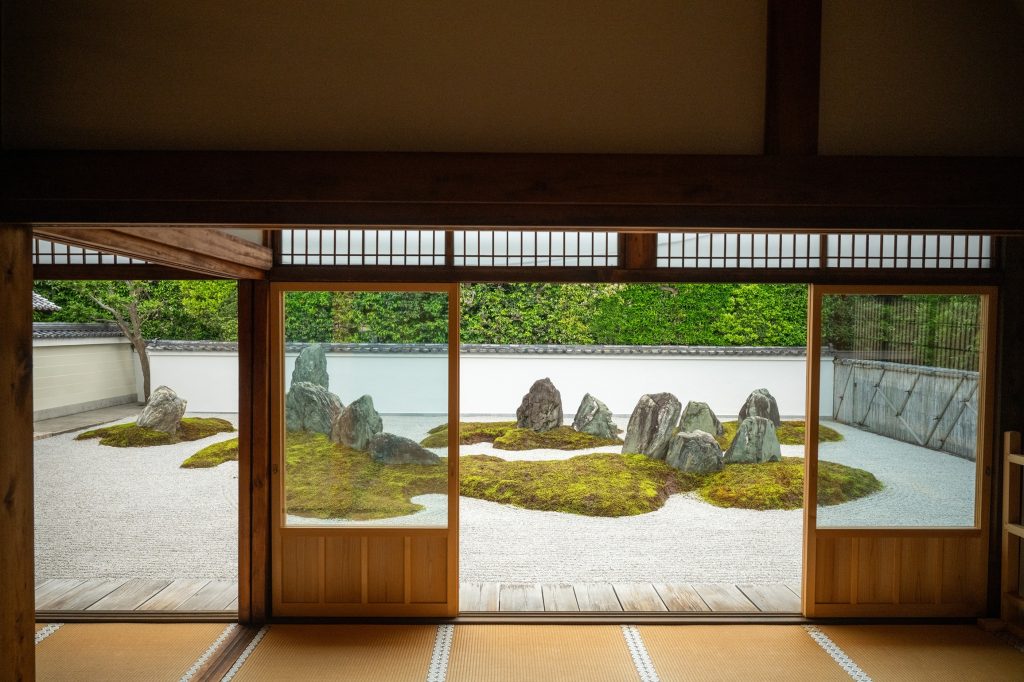
Fotografía de Kyotophotograph
El templo Kōsei-ji es famoso por su Shinwa-no-niwa, un jardín seco que se extiende frente al salón principal. Este jardín fue creado por el célebre paisajista Shigemori Mirei (1896-1975) y posee un diseño único en el que el musgo y las rocas forman el kanji de «kokoro» (corazón/mente).
La sala principal alberga la imagen principal del templo, un Shō-Kannon-Bosatsu que se cree que fue creado en el período Heian (794-1185).
Además, en una pared del salón principal se encuentra una famosa placa de madera creada durante el período Edo (1600-1868), decorada con peonías, mariposas y un gato. Según la leyenda, el gato salía de la placa y bailaba cada vez que oía el sonido de un shamisen. El abad de la época usó poderes divinos para sellar al gato dentro de la placa, pero el gato se le apareció en sueños y le pidió perdón, por lo que el abad rompió el sello. Esta placa está considerada como una de las «siete maravillas» de la zona de Demizu-dori, donde se ubica el templo Kōsei-ji.
| Fechas | Del 9 de enero (viernes) al 23 de febrero (lunes) de 2026 *Cerrado al público el 18 de enero (domingo) y el 8 de febrero (domingo). *Abre a las 13:00 el 25 de enero (domingo), el 1 de febrero (domingo) y el 15 de febrero (domingo). |
| Horas | 10:00 – 16:30 (Entrada hasta las 16:00) |
| Tarifa de admisión | Adultos: 800 yenes / Niños de 6 a 12 años: 400 yenes |
| Acceso | • Desde la estación de Kioto o desde la estación Nijo de la línea JR Sagano, camine 15 minutos desde la estación o tome el autobús urbano n.° 52 y bájese en Shichihon Demizu. La parada de autobús está a 2 minutos a pie. • Desde la estación de Kioto, tome el autobús urbano n.° 6 o n.° 206 y bájese en Senbon Demizu. Hay que caminar 4 minutos desde la parada de autobús. |
10. Salón Kannon-do del templo Ninna-ji
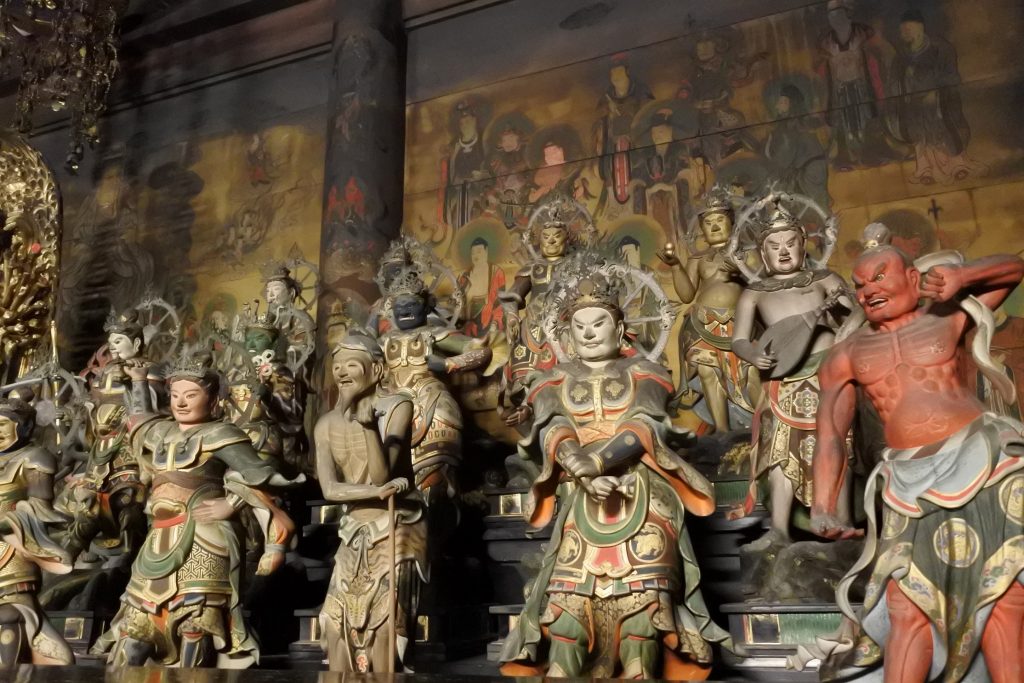
Patrimonio de la Humanidad
El templo Ninna-ji fue construido en el año 888 d. C. y ha sido declarado Patrimonio de la Humanidad por la UNESCO. El emperador Uda (867-931) nació aquí y posteriormente residió en el templo como su primer abad. Ninna-ji es un templo monzeki, término que se refiere a los sacerdotes budistas de linaje aristocrático o imperial, aquellos que servían a la familia imperial, y a los templos donde residían. Ninna-ji es el templo principal de la escuela Omuro del budismo Shingon.
La mayoría de sus sumos sacerdotes provenían de la familia imperial, y la residencia del sumo sacerdote se llamaba “Omuro”, un término honorífico que significa “morada”.
| Fechas | Del 9 de enero (viernes) al 17 de marzo (martes) de 2026 *Cerrado al público el 18 de enero (domingo) y el 18 de febrero (miércoles). |
| Horas | 10:00 – 16:00 (Entrada hasta las 15:30) de enero a febrero, 10:00 – 16:30 (Entrada hasta las 16:00) en marzo. |
| Tarifa de admisión | Adultos: 700 yenes / Gratis para menores de 18 años |
| Acceso | • Desde la estación de Kioto o desde la estación Enmachi de la línea JR Sagano, tomar el autobús urbano nº 26 o el autobús JR y bajarse en Omuro-Ninnaji. • Desde la estación de Kioto, tome la línea JR Sagano hasta la estación Uzumasa y tome la línea Keifuku (Randen) desde la estación Satsueijo-mae hasta la estación Omuro-Ninnaji. 3 minutos a pie desde la estación. |
11. Nishi Hongwan-ji Hiunkaku (Pabellón de las Nubes Voladoras)
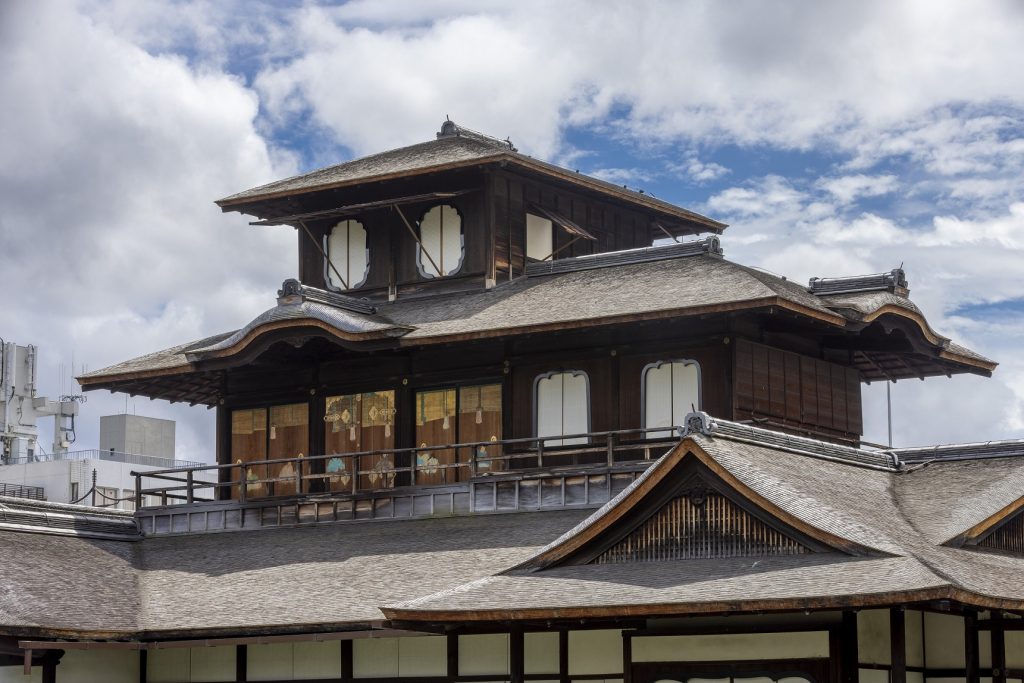
Patrimonio de la Humanidad
Gracias a su arquitectura única e impresionante, Hiunkaku, parte del sitio declarado Patrimonio de la Humanidad por la UNESCO en Nishi Hongwan-ji, es considerado uno de los tres grandes pabellones de Kioto, junto con Kinkaku-ji (el Pabellón Dorado) y Ginkaku-ji (el Pabellón Plateado). El nombre «Hiunkaku», que significa «pabellón de la nube voladora», proviene de su apariencia: sus esbeltas columnas y la abundancia de puertas de papel shoji blancas, además de su forma general, que, a diferencia de Kinkaku-ji y Ginkaku-ji, es asimétrica, lo que le da la apariencia de una nube flotante.
| Fechas | Del 9 de enero (viernes) al 18 de marzo (miércoles) de 2026 *Cerrado al público el 31 de enero (sábado), 2 de febrero (lunes), 5 (jueves), 7 (sábado), 10 (martes), 15 (domingo), 16 (lunes), 19 (jueves), 22 (domingo), 23 (lunes), 27 (viernes), 3 de marzo (martes) – 7 (sábado) y 10 (martes). |
| Horas | 10:00 – 16:30 (Entrada hasta las 16:00) |
| Tarifa de admisión | Adultos: 800 yenes / Niños de 6 a 12 años: 400 yenes |
| Acceso | ・Desde la estación de Kioto, tome el autobús urbano n.° 9, n.° 28 o n.° 75 y bájese en Nishi Hongwanji-mae. ・Desde la puerta Hachijo de la estación de Kioto, tome el autobús Keihan n.° 311 o n.° 312 y bájese en Nishi Hongwanji-mae. |
12. Templo Tō-ji, Pagoda de cinco pisos
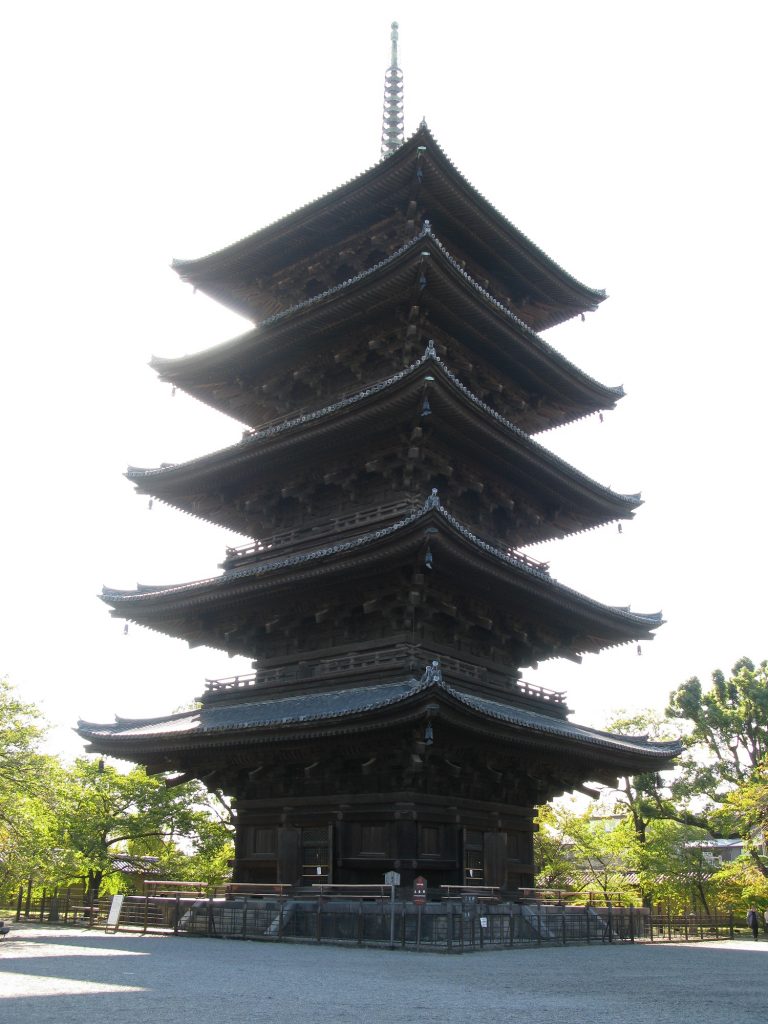
Patrimonio de la Humanidad
La pagoda de cinco pisos del templo Tō-ji es la torre de madera más alta de Japón, con una altura aproximada de cincuenta y cinco metros. Durante las Aperturas Especiales de Invierno de Kioto, los visitantes pueden acceder al primer piso de esta pagoda, que normalmente está cerrado al público.
En el interior hay un pilar que se extiende hasta el quinto piso, rodeado por los cuatro lados por estatuas budistas.
| Fechas | Del 9 de enero (viernes) al 18 de marzo (miércoles) de 2026 |
| Horas | 8:30 – 17:00 (Entrada hasta las 16:30) |
| Tarifa de admisión | Adultos 1.200 yenes / Jóvenes de 16 a 18 años: 700 yenes / Niños de 6 a 15 años: 500 yenes (la tarifa incluye la entrada general) |
| Acceso | • A 15 minutos a pie de la estación de Kioto. • Desde la estación de Kioto, tome el autobús urbano número 205 hasta Toji-michi. Camina 5 minutos desde la parada de autobús. |
13. Templo Daigo-ji, Templo Sanbō-in
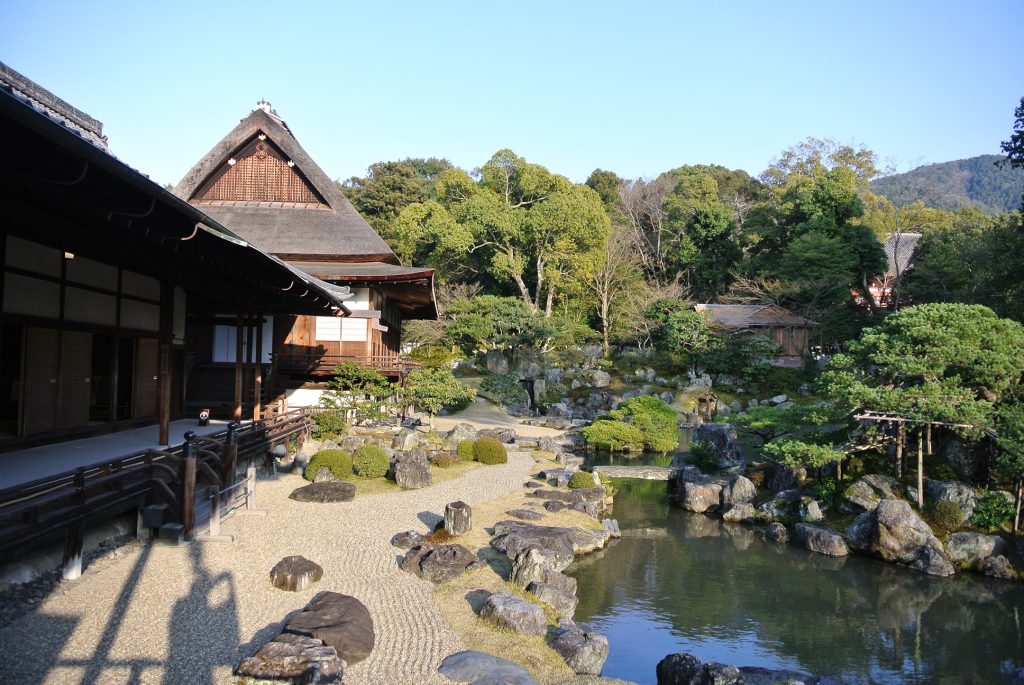
Patrimonio de la Humanidad
El edificio Omoteshoin, el Tesoro Nacional, y su jardín fueron diseñados para las famosas reuniones para ver los cerezos en flor organizadas por Toyotomi Hideyoshi (1537-1598), y la estructura es reconocida como un excelente ejemplo de la fastuosa arquitectura del período Momoyama (finales del siglo XVI).
Durante las Aperturas Especiales de Invierno de Kioto, se abrirán al público el Miroku-Bosatsu (Maitreya Bodhisattva) (Bien Cultural Importante), una estatua budista de hermoso rostro creada por el famoso escultor budista Kaikei, activo en el siglo XII, así como la sala de té Chinryu-tei.
También podrás ver el famoso cuenco de té tenmoku dorado, que fue un regalo de Hideyoshi.
| Fechas | Del 9 de enero (viernes) al 18 de marzo (miércoles) de 2026 |
| Horas | 9:00 – 16:30 (Entrada hasta las 16:00) de enero a febrero, 9:00 – 17:00 (Entrada hasta las 16:30) en marzo. |
| Tarifa de admisión | Adultos: 800 yenes / Gratis para niños de 6 a 12 años *Se requerirá adicionalmente una tarifa de entrada general para Sanbo-in (6 años o más: 600 yenes). |
| Acceso | • Desde la estación JR Yamashina, tome la línea Tozai del metro de la ciudad hasta la estación Daigo y salga en la salida n.º 2. Camine 10 minutos desde la estación. • Desde la Puerta Hachijo de la estación de Kioto (frente al Hotel Keihan), tome la línea Daigoji del autobús Keihan Kyoto hasta Daigoji. |

